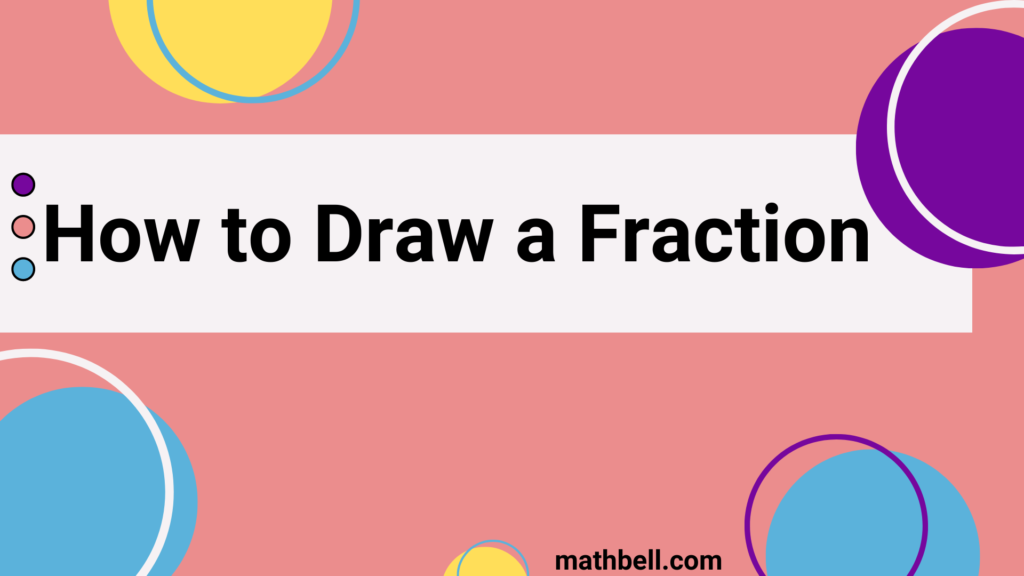Do you think you have to teach students how to draw a fraction, or will they just pick up on how to do it looking at images in a given problem?
Just like everything else involving elementary math, this is a skill that needs to be taught.
Now some students may be able to figure it out on their own or can learn by looking at other images, but most students will draw some very wild picture models of fractions when you ask them to draw one.
You learn quickly that most students don’t have strong spatial skills.
They sometimes think that two picture objects are the same size when they are obviously not.
Or vice versa, when two objects are the same size, students might look at them and say they are different sizes.
It’s not the end of the world.
They just need to be taught how to look at something visually and determine its size in comparison to another object.
The same goes for drawing picture models of fractions.
I’m going to show you simple ways that you can draw a fraction so then you are confident in teaching these same ways to your students.
Watch the Video
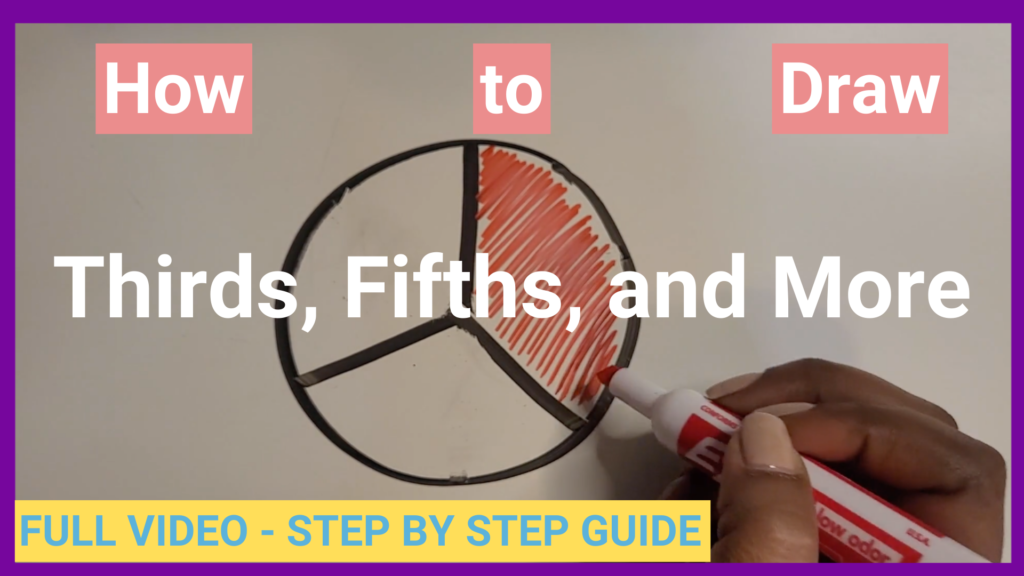
Draw Fractions Using Area Models
How to Draw a Rectangular Fraction Model
Halves
We will begin with the fraction 1/2.
Draw a rectangle. Make it big enough for you to partition, or cut it and clearly see both sides.
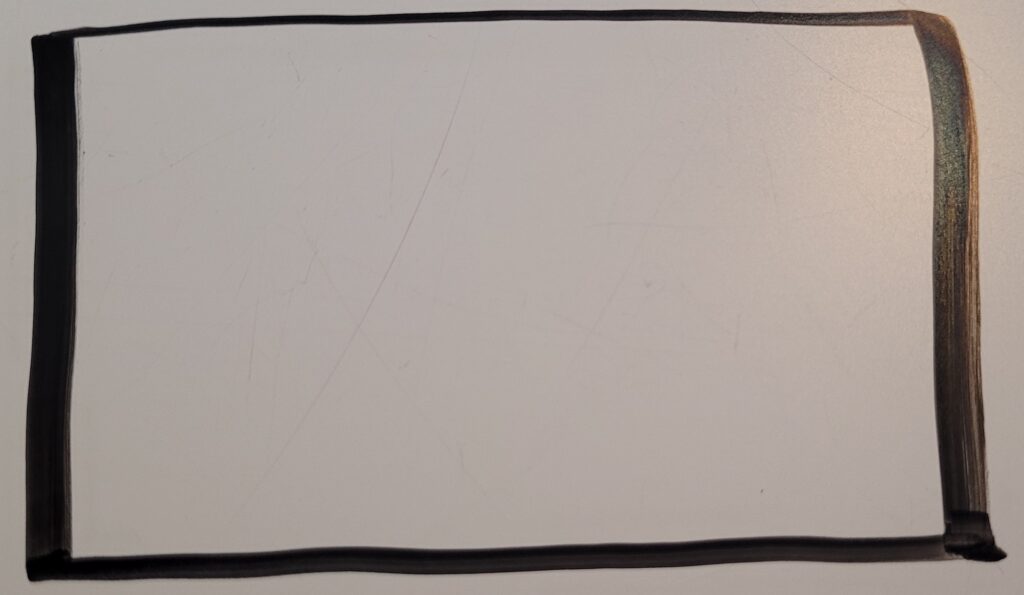
Next, draw a line down the middle of the rectangle.
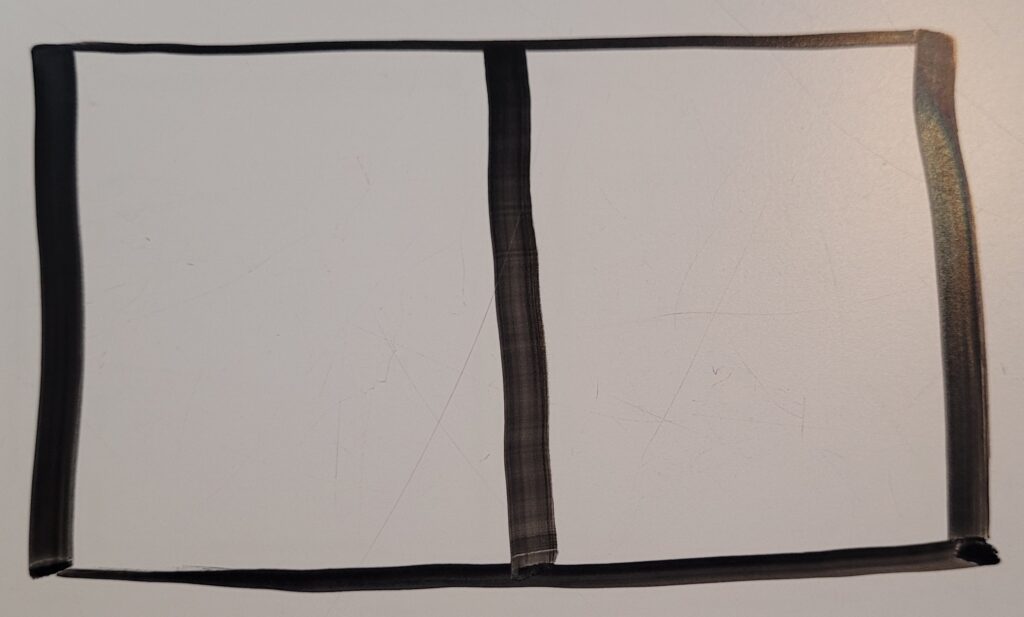
Each side of the line now represents one half.
You can label each side or leave them blank.
To represent the fraction, 1/2, shade in one side of the rectangle.
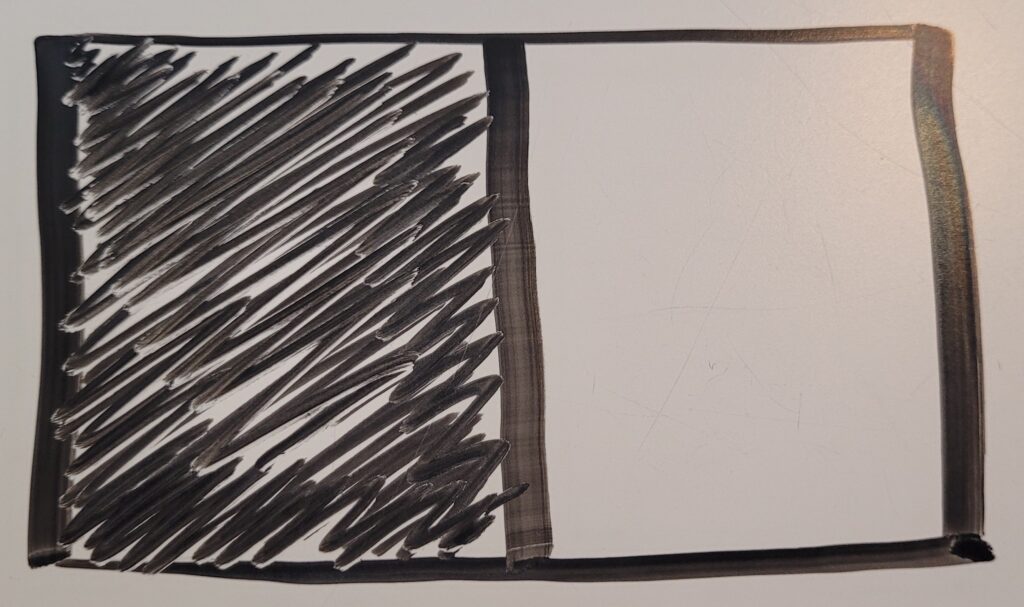
Fourths
The next fraction we will draw is 3/4.
Use the same steps you took to draw the fraction 1/2. We will add on to those steps.
After partitioning the rectangle in half, partition each half in half again.
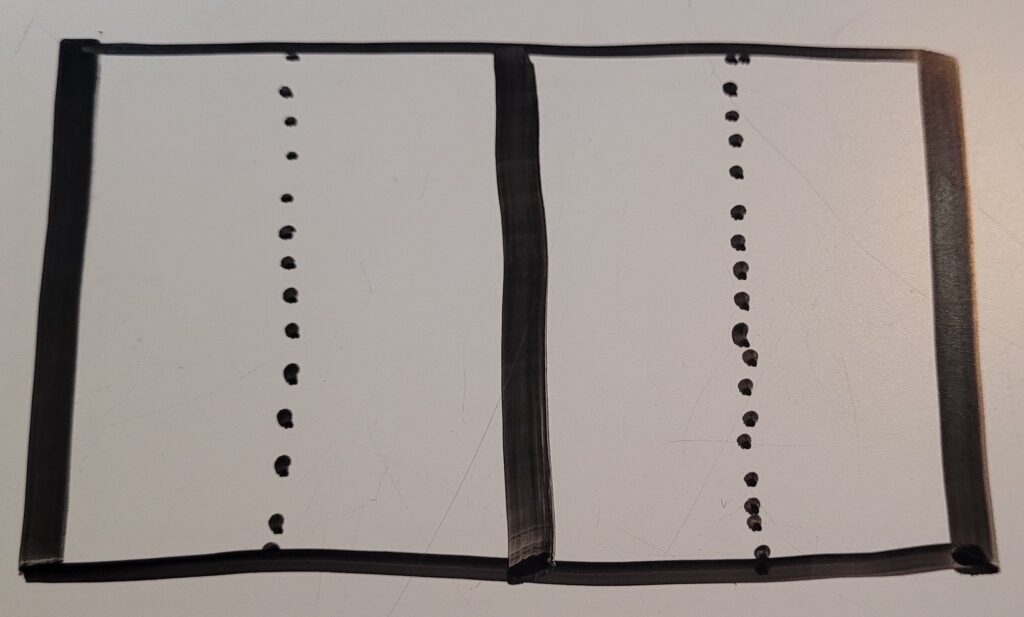
This will create four equal parts, or fourths.
Shade in three of the parts to represent the fraction 3/4.
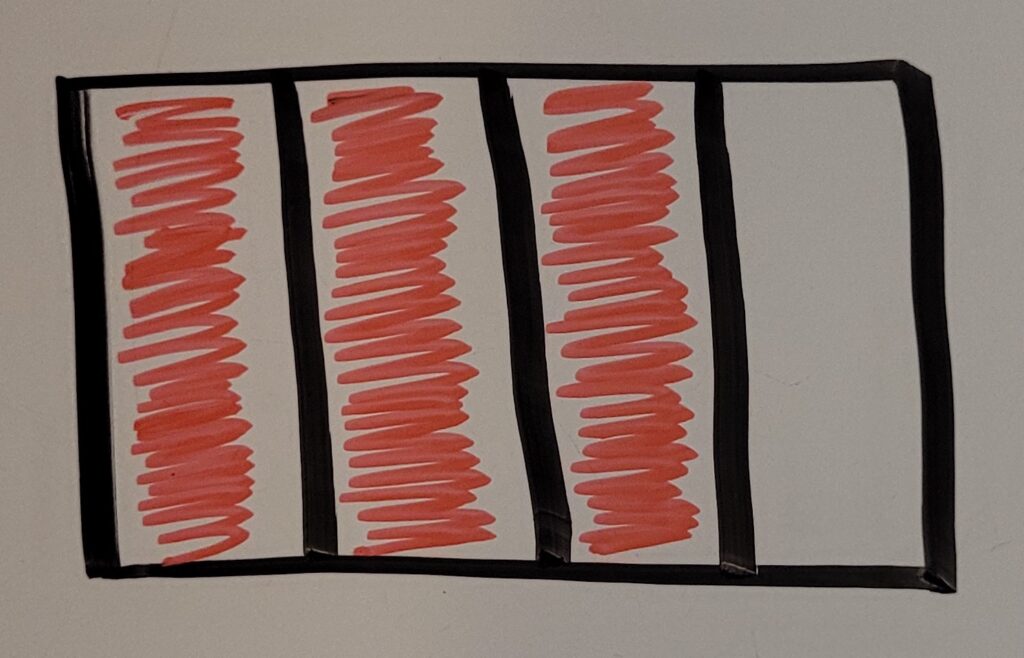
This easily works since 4 is a multiple of the number 2 and both are even numbers.
Doubling the amount of parts by partitioning them in half is an easier way to draw fraction models than drawing a fourth from left to right, one by one.
Let’s keep going with the doubling strategy and create eighths!
Eighths
Start again with the halves after drawing another rectangle.
Remember, partition the halves in half to create four fourths.
Now, repeat that step and partition each fourth in half to create eighths.
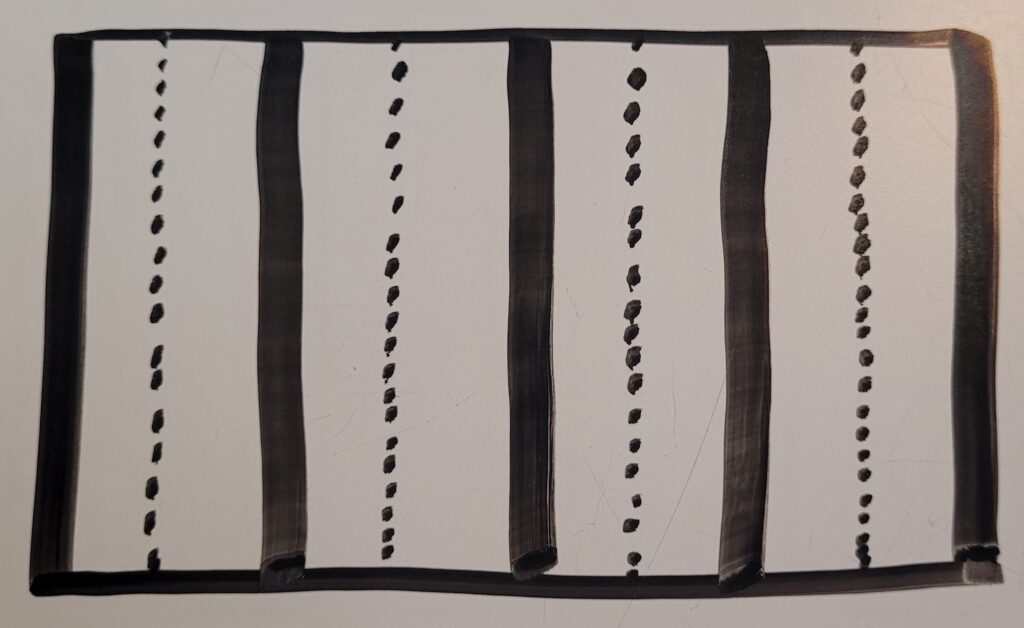
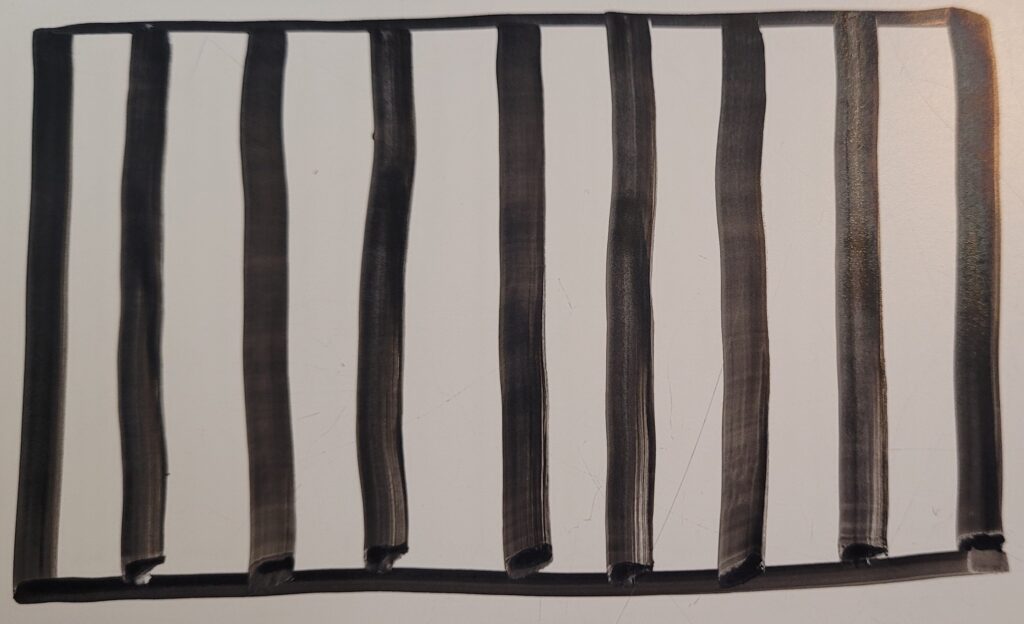
Shade in five of the equal parts to represent the fraction 5/8.
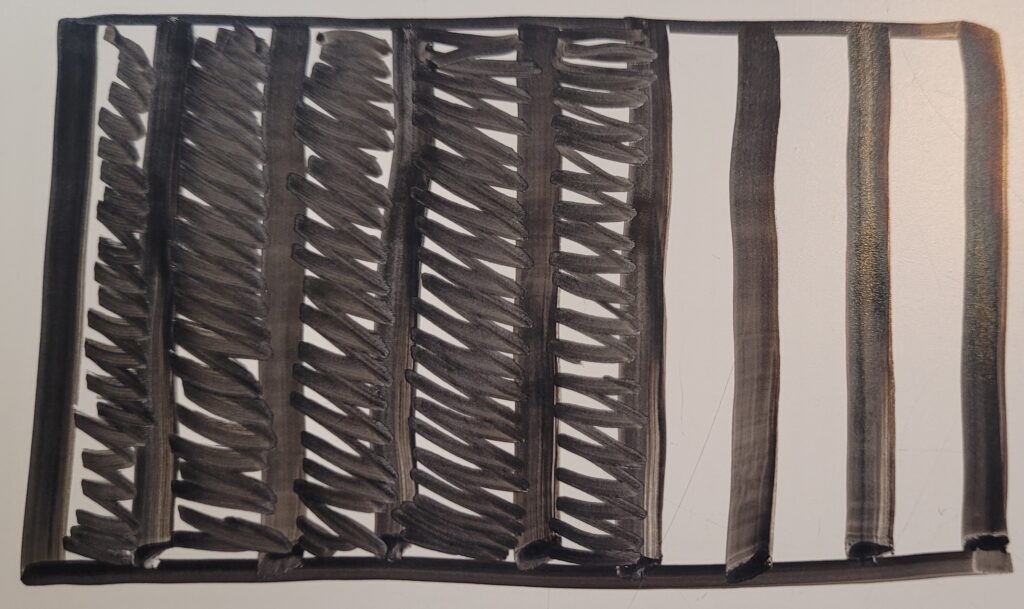
If you ever need to create 16th’s or 32nd’s, just keep doubling by partitioning each part in half, starting with the two halves.
We, however, are going to move onto the fraction 2/3.
Thirds
The denominator is a 3 so we will partition a new rectangle into three equal parts, or thirds.
Three is not an even number so we cannot partition the whole right down the middle.
This is where visual, spatial, and estimation skills really come into play. And a lot of practice!
One option when you want to draw a fraction would be to use a ruler and divide the total length of the rectangle by 3 and determine the length of each part.
Or you can make a visual estimation.
We know that thirds are less than halves but greater than fourths.
This would be a good place to partition the rectangle.
Repeat this step a little past where half way would be.
The three parts should look about the same.
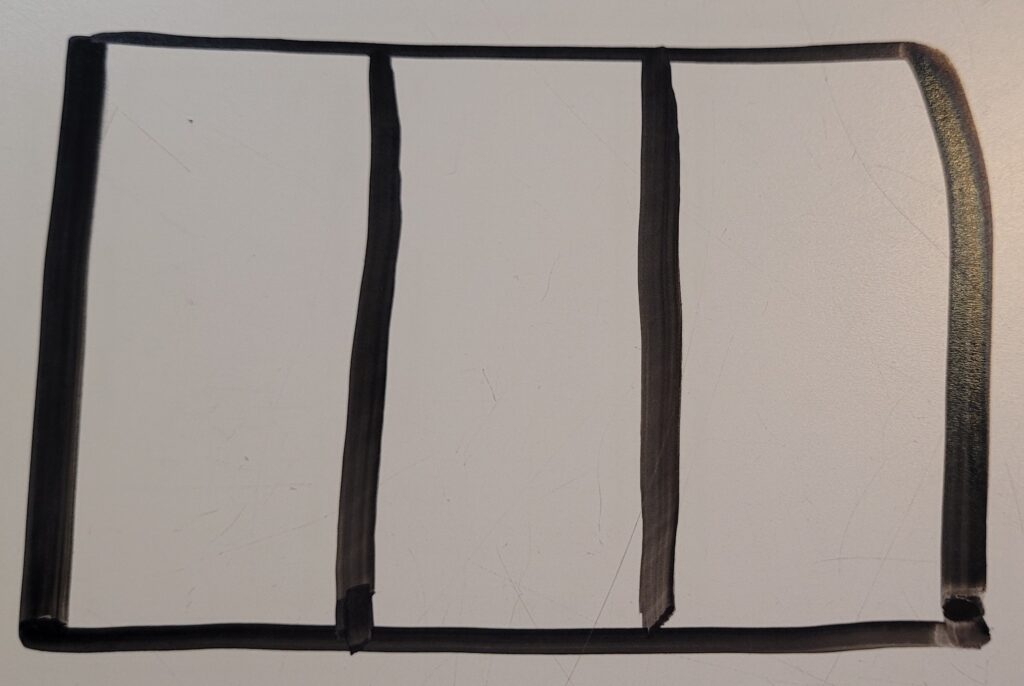
This is also a great place to, if you haven’t done so already, let your students know that the expectation of their picture model is for it to make sense when they try their best. Not to spend too much time on the picture as if they were in art class, learning to become better artists.
Drawing thirds well, and eventually fifths, will become better with a lot of practice.
Once the thirds are created, shade in two of the parts to represent the fraction 2/3.
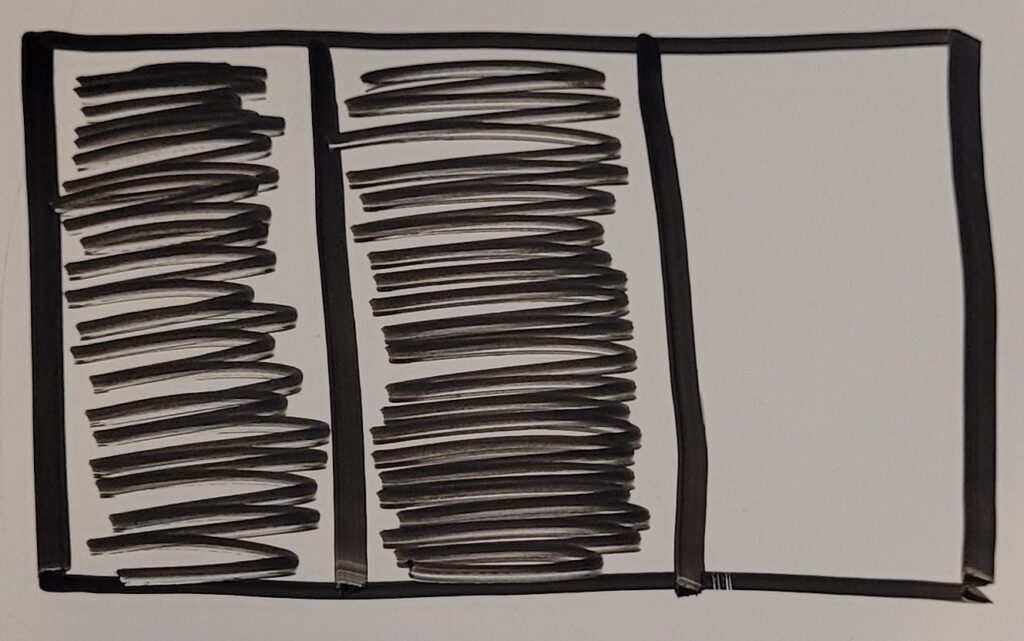
Now since we have thirds, we can build on that and create sixths.
Sixths
When you double 3, you get 6. So again we will partition each of these parts, the thirds, in half on a new rectangle to create 6 sixths.
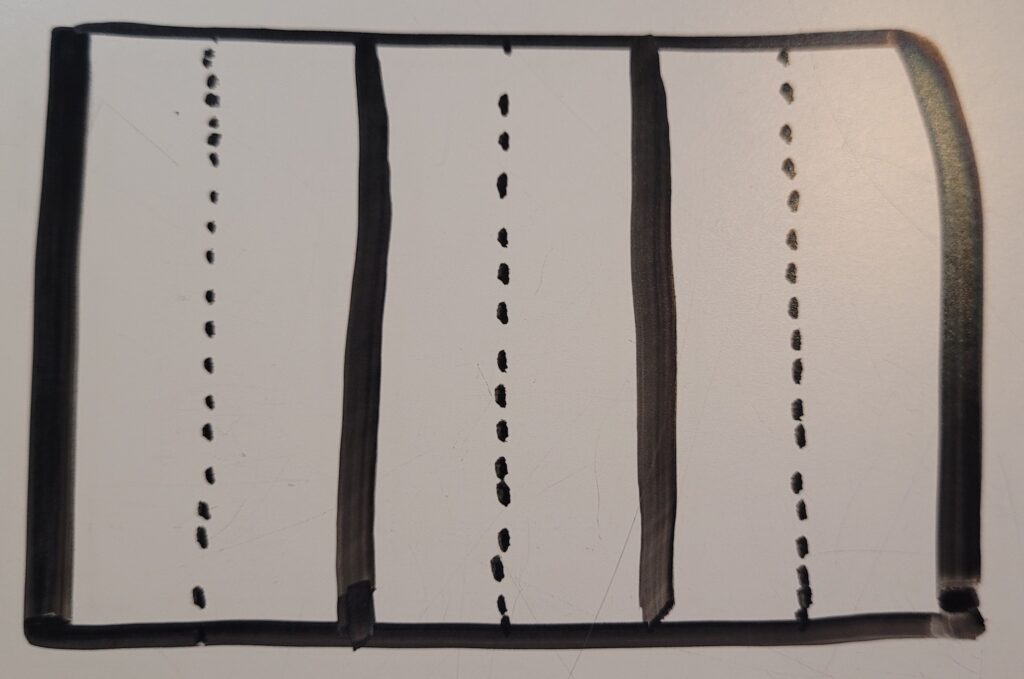
Another option for drawing sixths is to start with partitioning the rectangle down the middle to create two halves again.
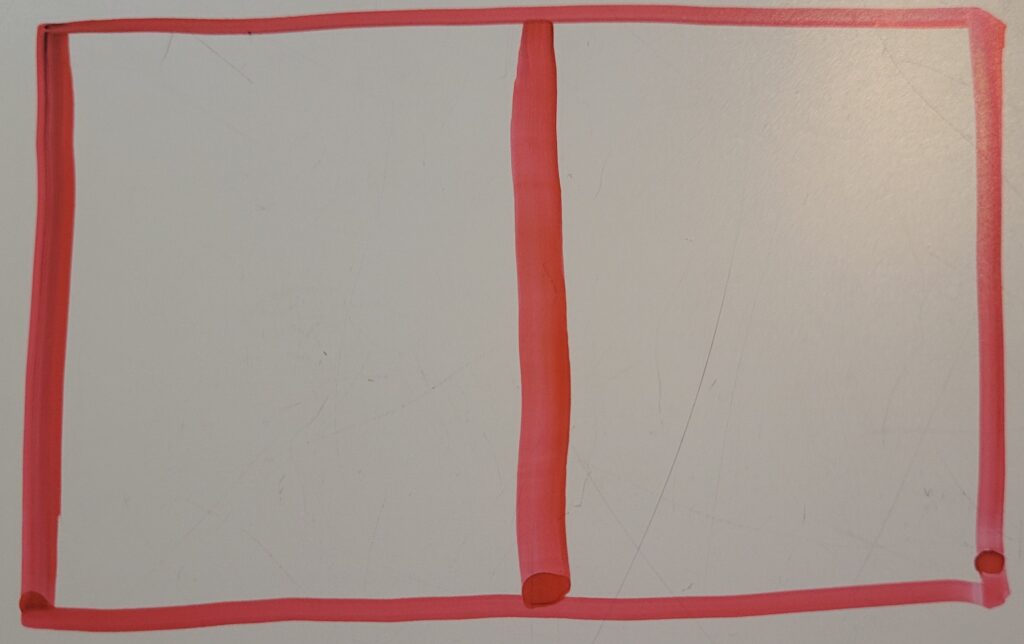
Since 6 is an even number, we can build from halves, or two equal parts.
After creating the two halves, partition each side, or half, into thirds.
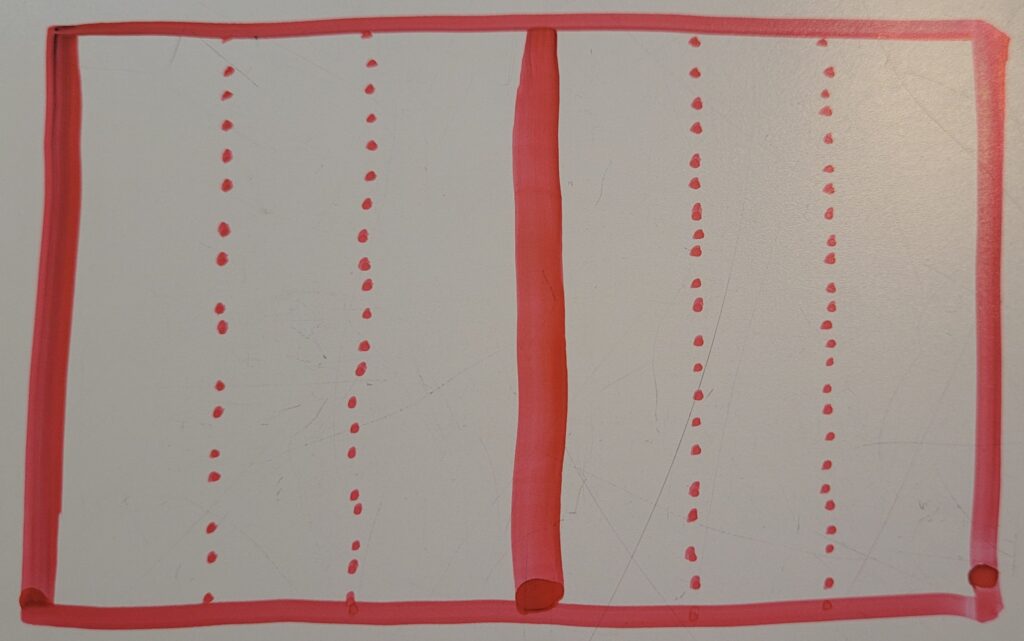
3 thirds on one side plus 3 thirds on the other side of the middle line equals 6 sixths.
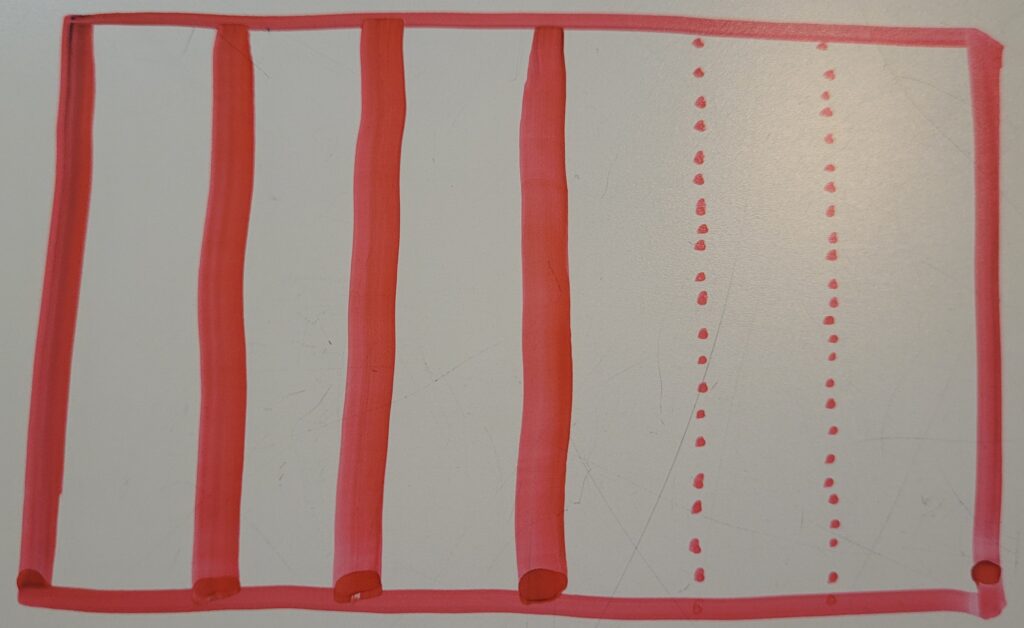
Once you have your 6 sixths by using either option, shade in 4 of those sixths to represent the fraction 4/6.
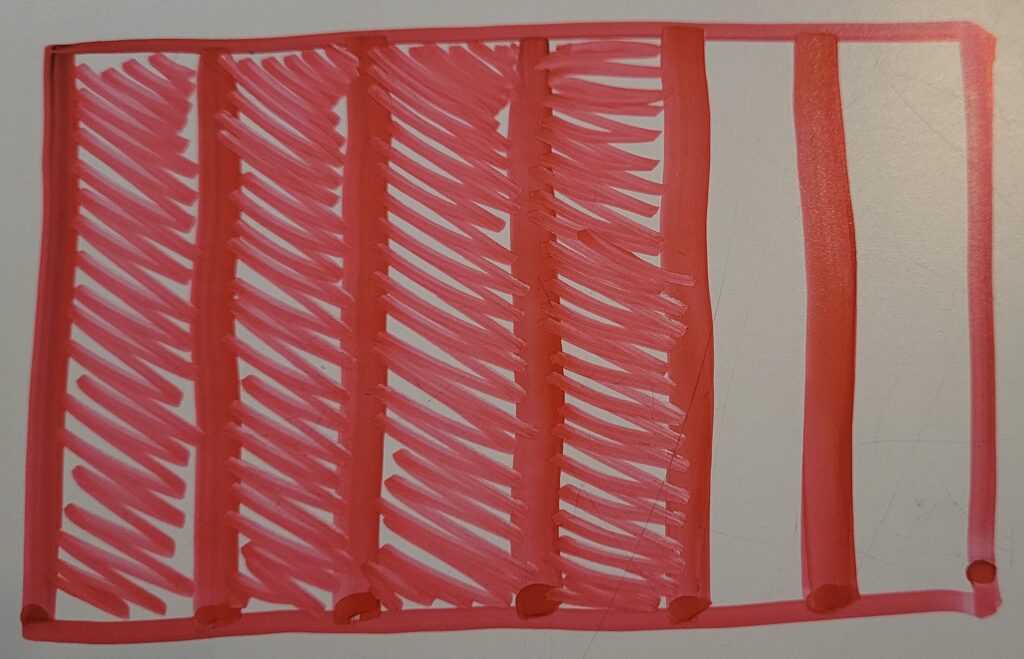
Twelfths
To make twelfths, we can double the sixths!
Draw a new rectangle and follow the same steps you used to create sixths.
Just like before, we will partition each sixth in half and therefore create 12 twelfths.
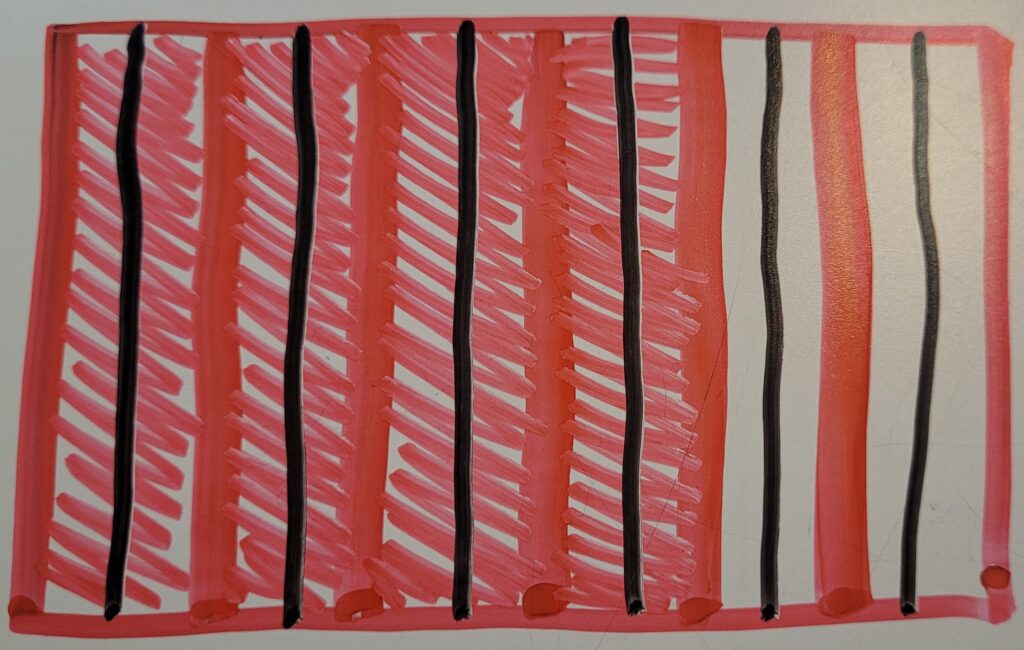
Shade in 8 of the twelfths to represent the fraction 8/12.
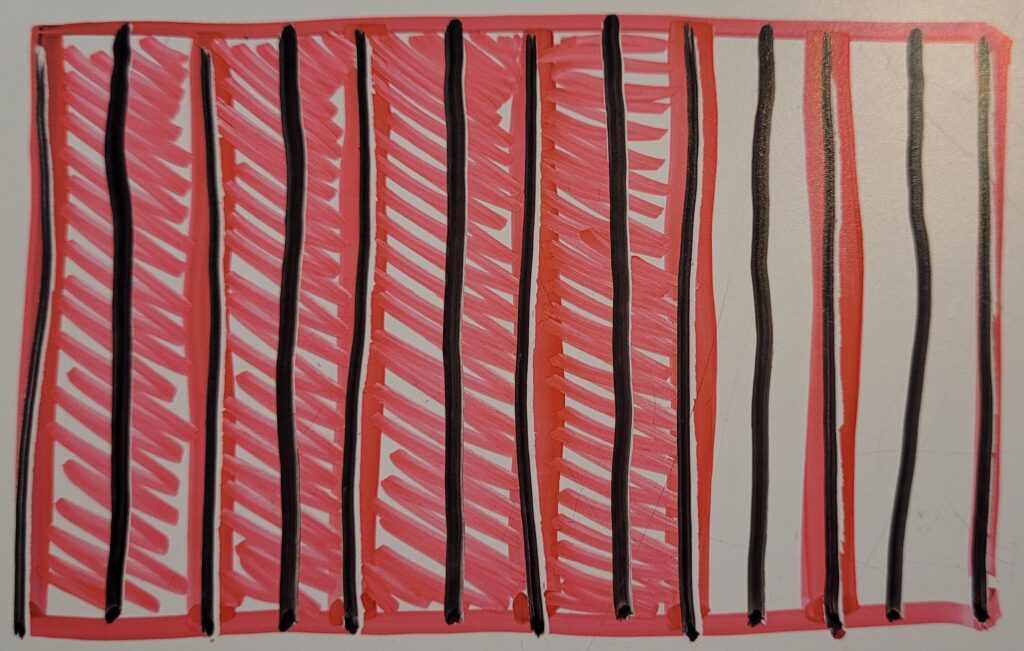
Now we are back at one of those denominators that are a bit more challenging to draw.
Fifths
Just like thirds, with fifths, you have to use your visual spatial skills to make sure the picture model makes sense.
Again you can use a ruler, or make estimations.
One fifth is less than one fourth but greater than one sixth.
You can use images of the fourths and sixths to help you create fifths.
Another way that I like to think about it is instead of creating a line down the middle of the rectangle, there will be a part or piece going down the middle of the rectangle. So i need to draw a line just a little off to the left of the midpoint or half way point, and then draw another line a little to the right of the midpoint.
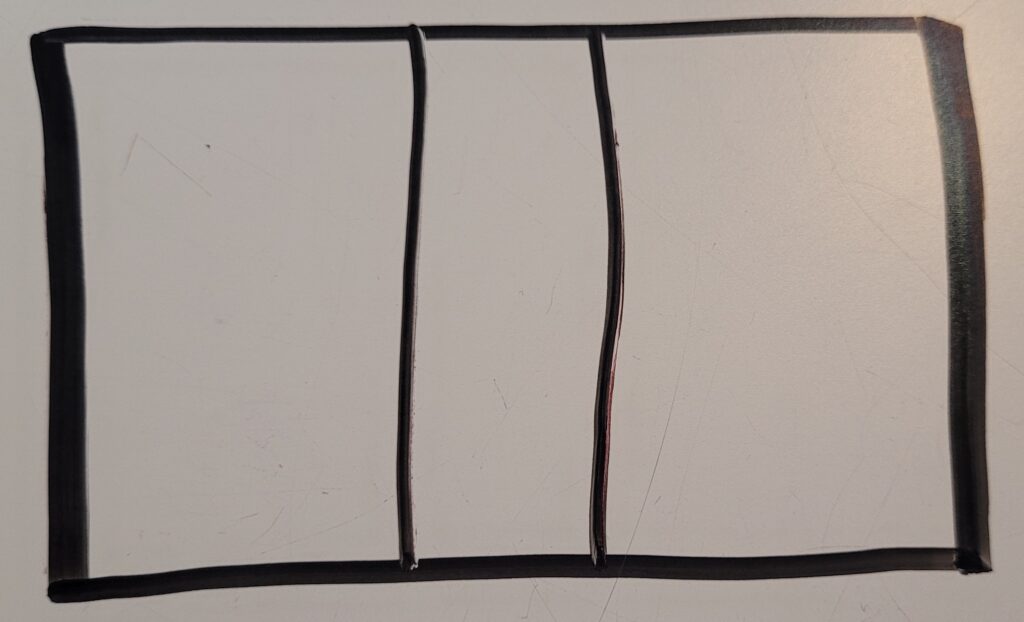
Once you create that middle piece, you can partition both pieces on the left and right of that piece down the middle.
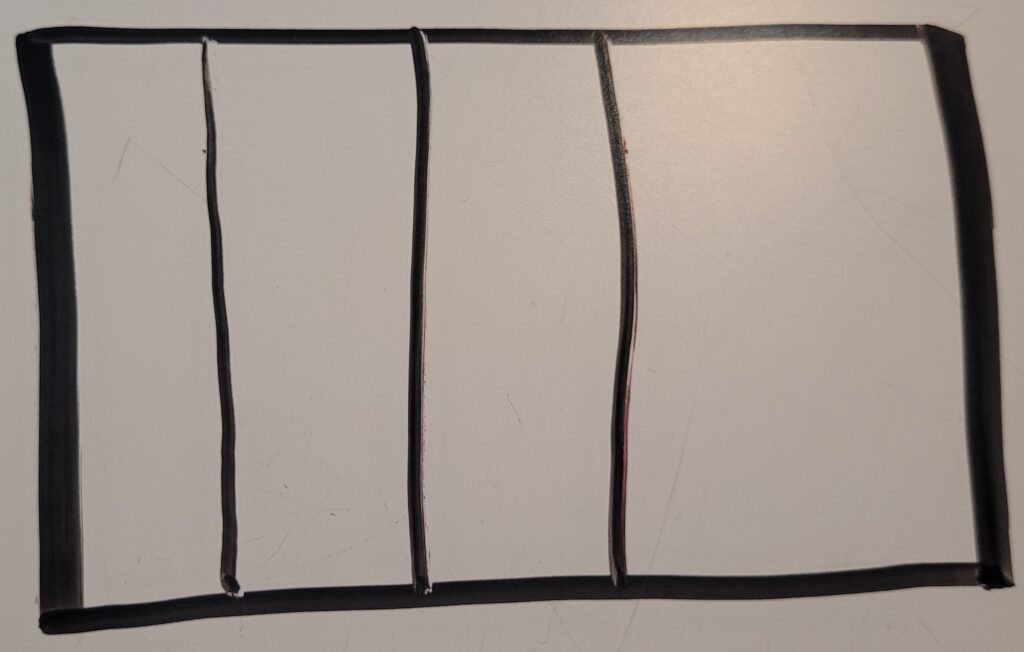
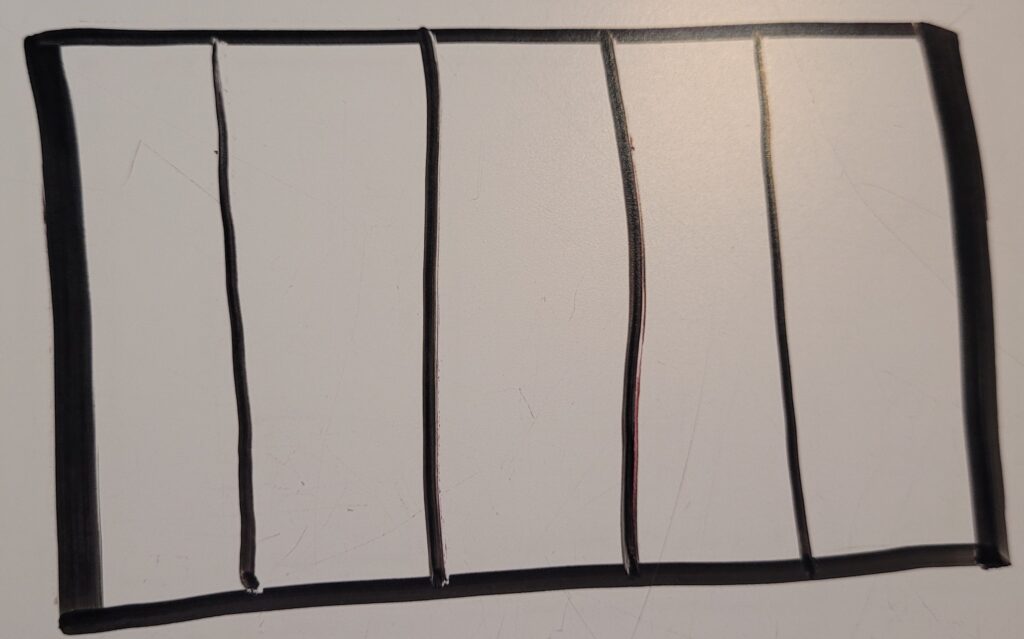
This will create 5 fifths.
Shade in three of the fifths to represent the fraction 3/5.
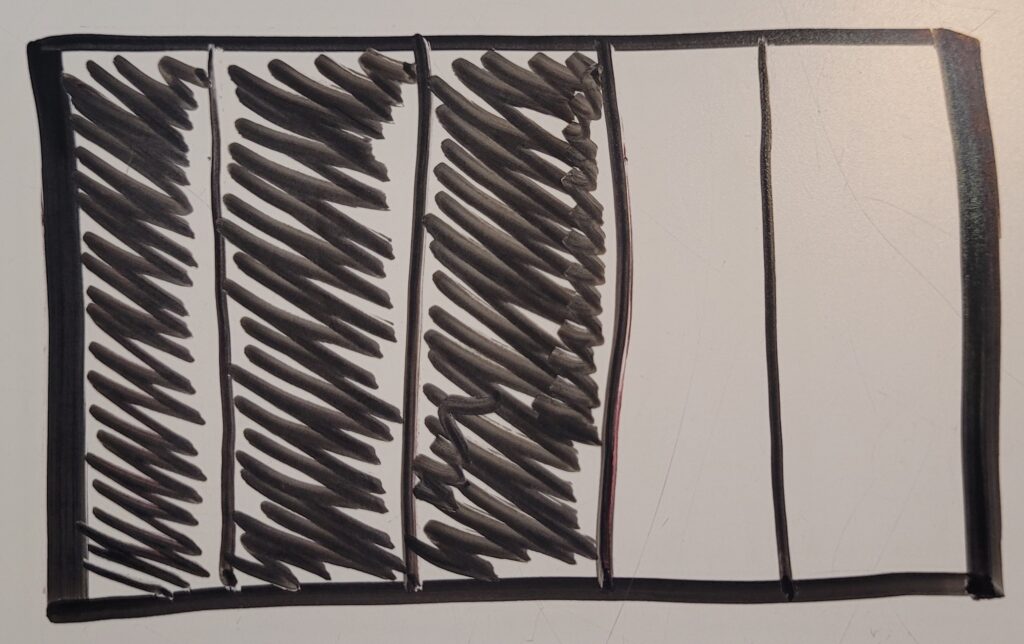
Tenths
And finally, to create tenths, you guessed it, just recreate your 5 fifths and partition each fifth down the middle.
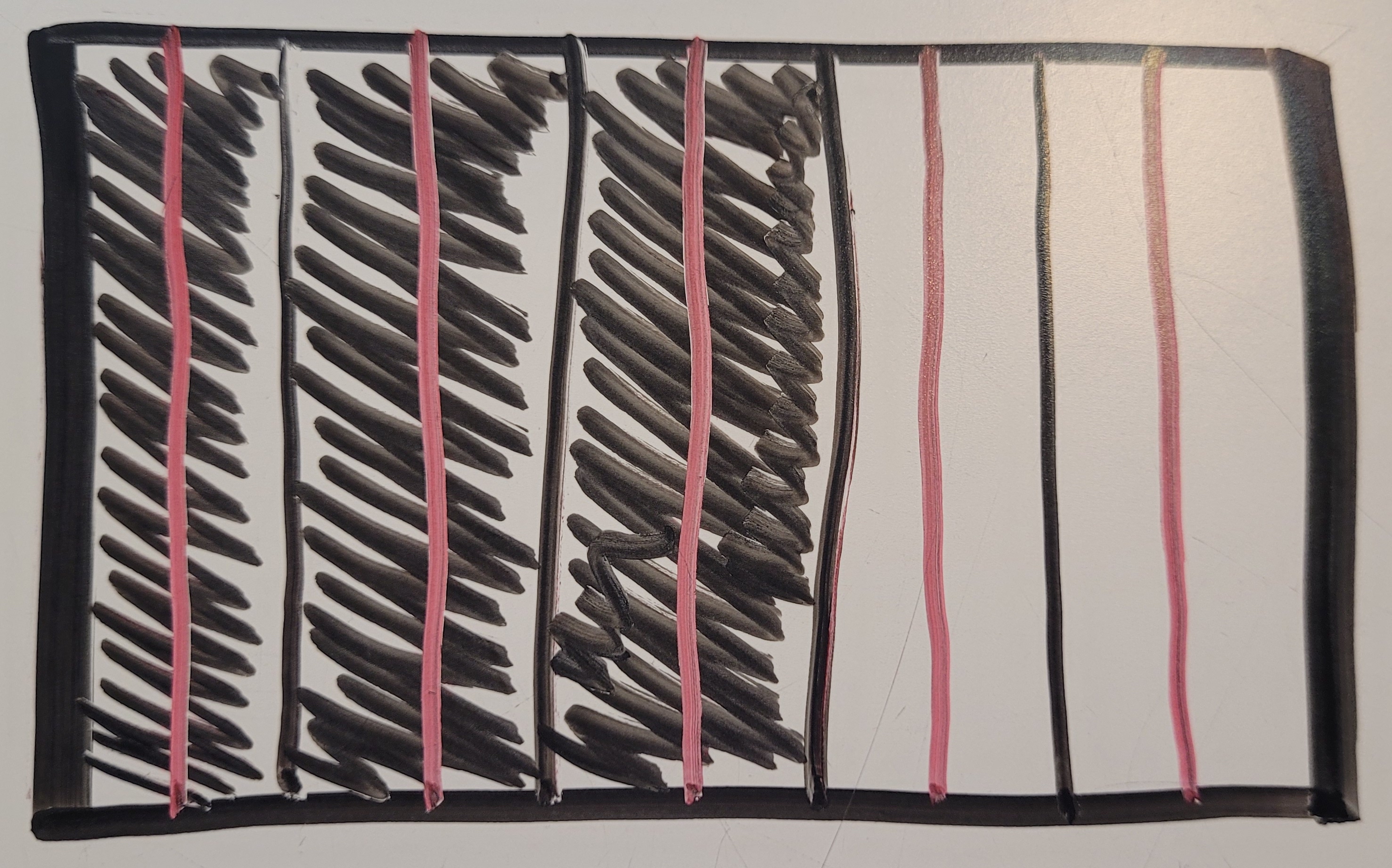
Then you will have 10 tenths.
Shade in 7 of the tenths to represent the fraction 7/10.
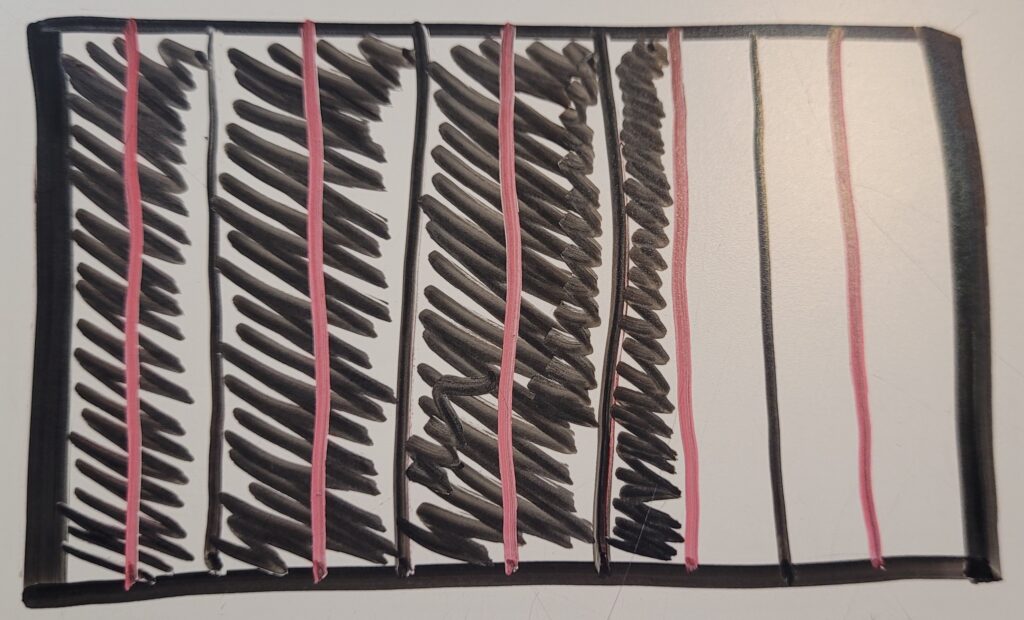
In the next section, you will learn how to draw fractions using circular area models.
Draw Fractions Using Circular Area Models
Halves
First we will draw 1/2.
Draw a circle. Tell your students to try their best at making it a good circle.
You too!
I mean, I usually have to redraw my circles 2 or 3 times. Especially if I have to draw it on a screen.
So after drawing the circle, draw a line going down the middle vertically.
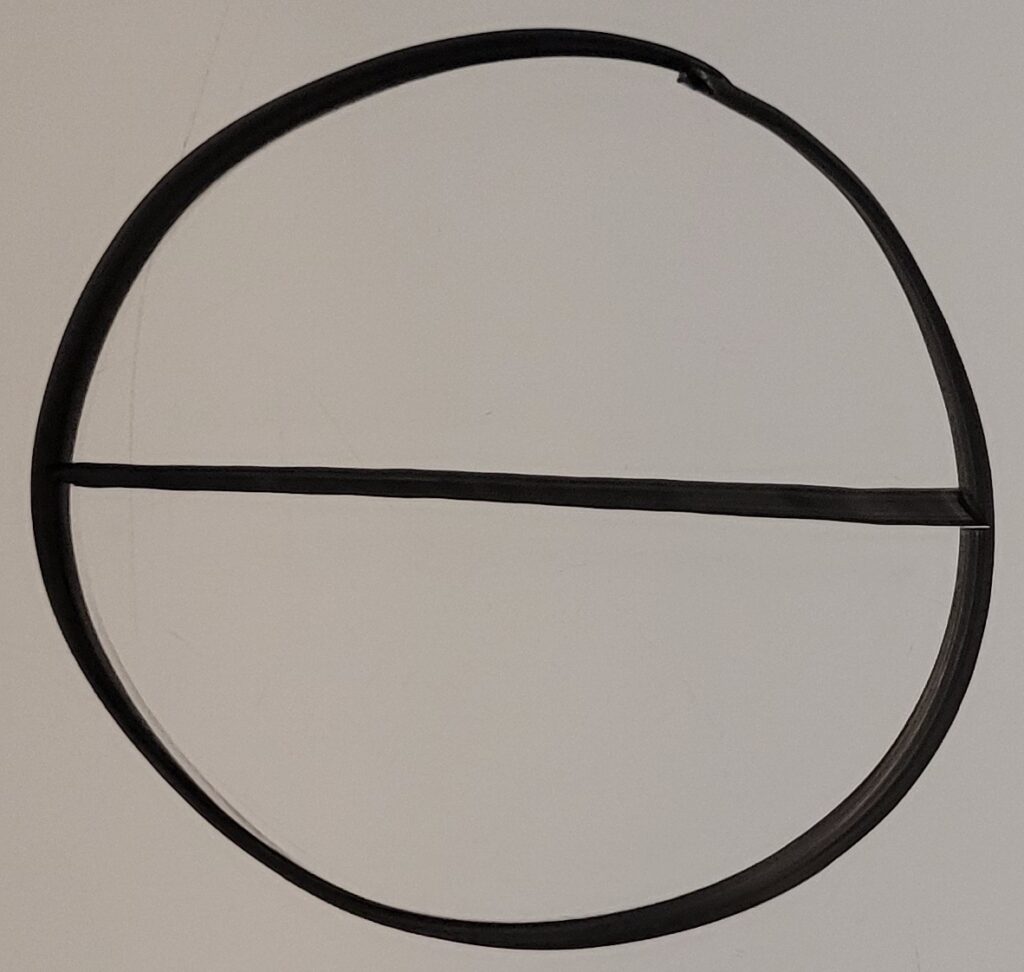
You could also draw the line in the middle horizontally.
Shade in 1 part to show 1/2.
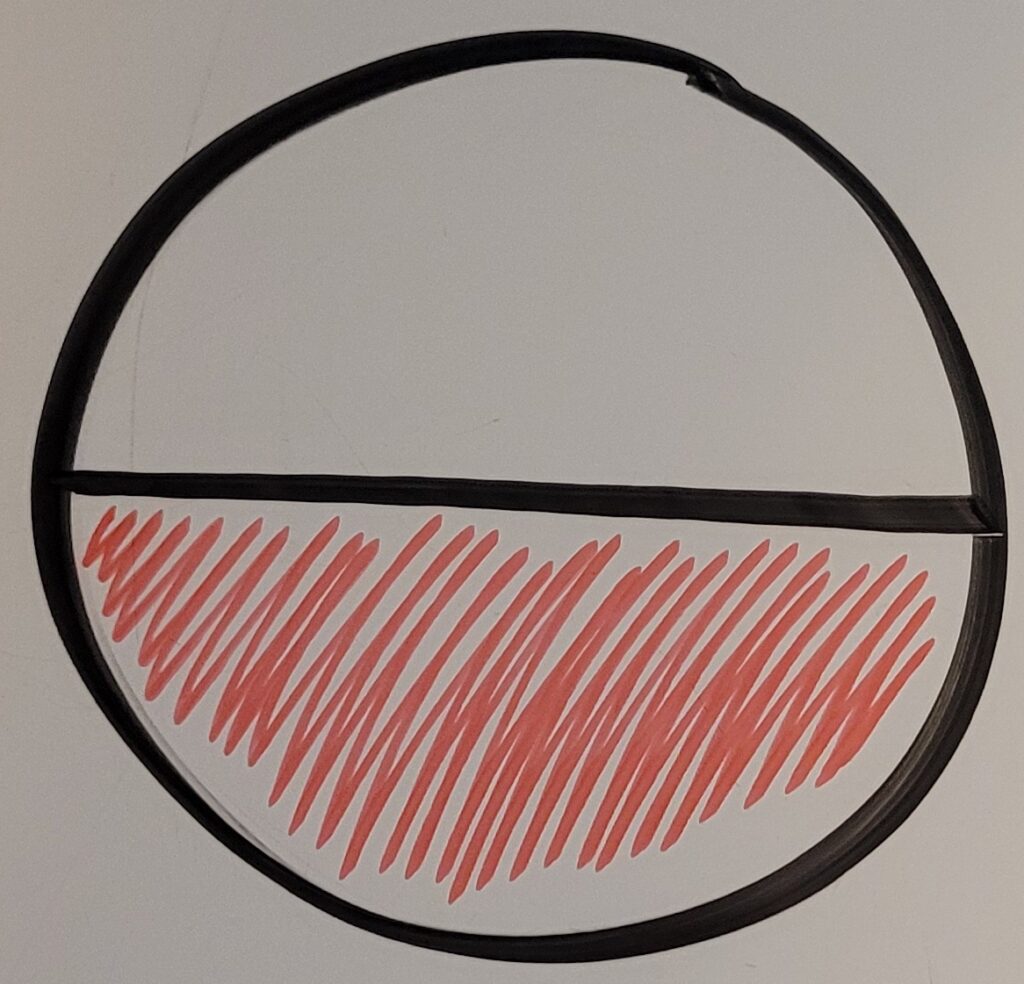
Fourths
Draw another circle, partition it in half vertically, then partition it in half horizontally as well.

Shade in 2 of the parts to show 2/4.
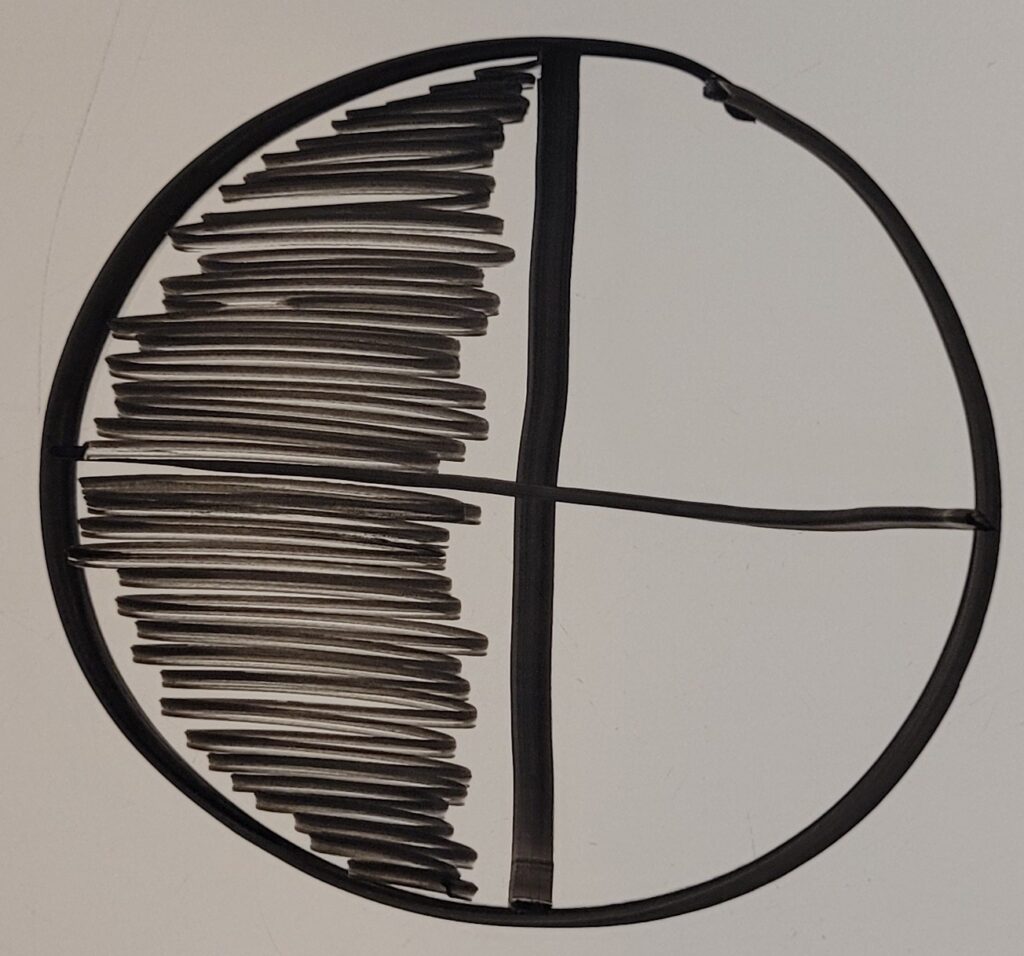
Eighths
For 4/8, draw a circle again and partition it into fourths like before.
Now partition each fourth in half. It should look like you are drawing a large ‘X’ inside of the circle.
Remember that all parts should be equal.
When we are drawing free hand, all parts won’t always be exactly equal, but we want them to be as close to the same as possible.
Shade in 4 of the parts to show 4/8.
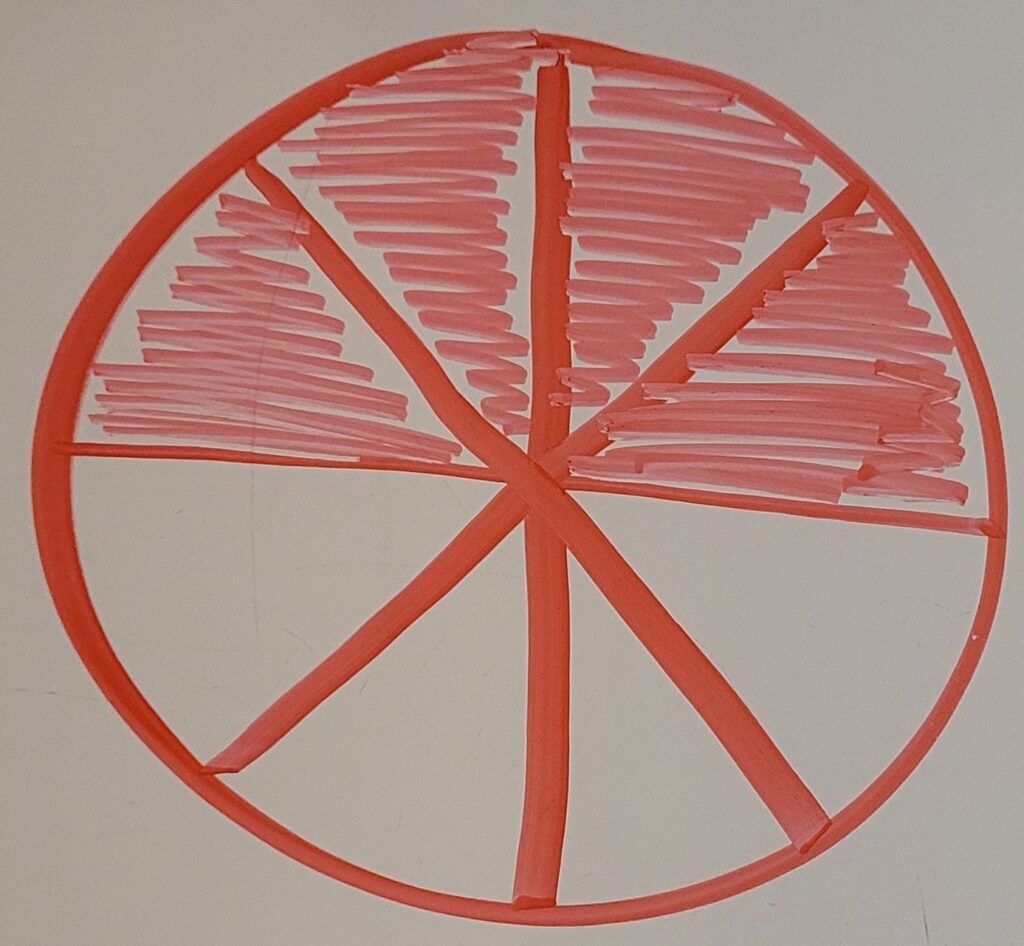
Next we will create sixths.
Sixths
In the previous example, we worked on thirds then moved into sixths.
With circular area models, I find it easier teaching students how to draw sixths first and then show them that thirds are just like sixths except you can take away three of those middle lines.
Let’s try it.
To make sixths, draw a line down the middle vertically and then draw two lines like a wide ‘X’.
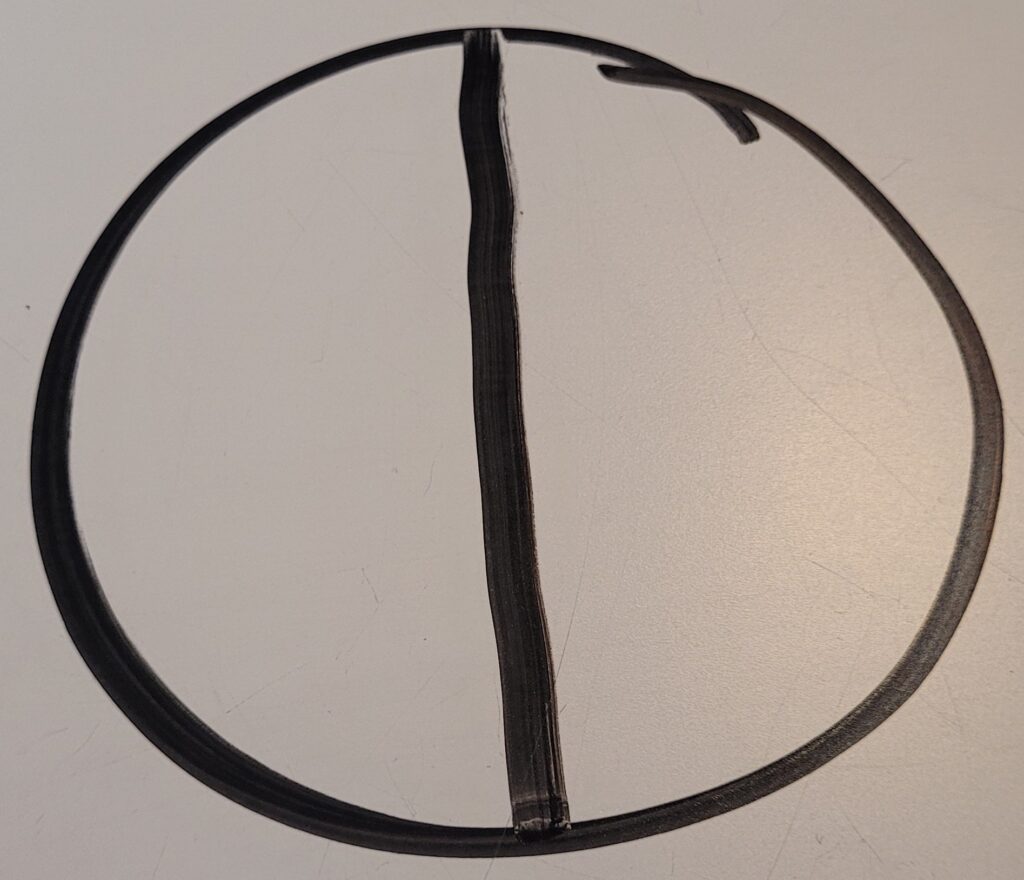
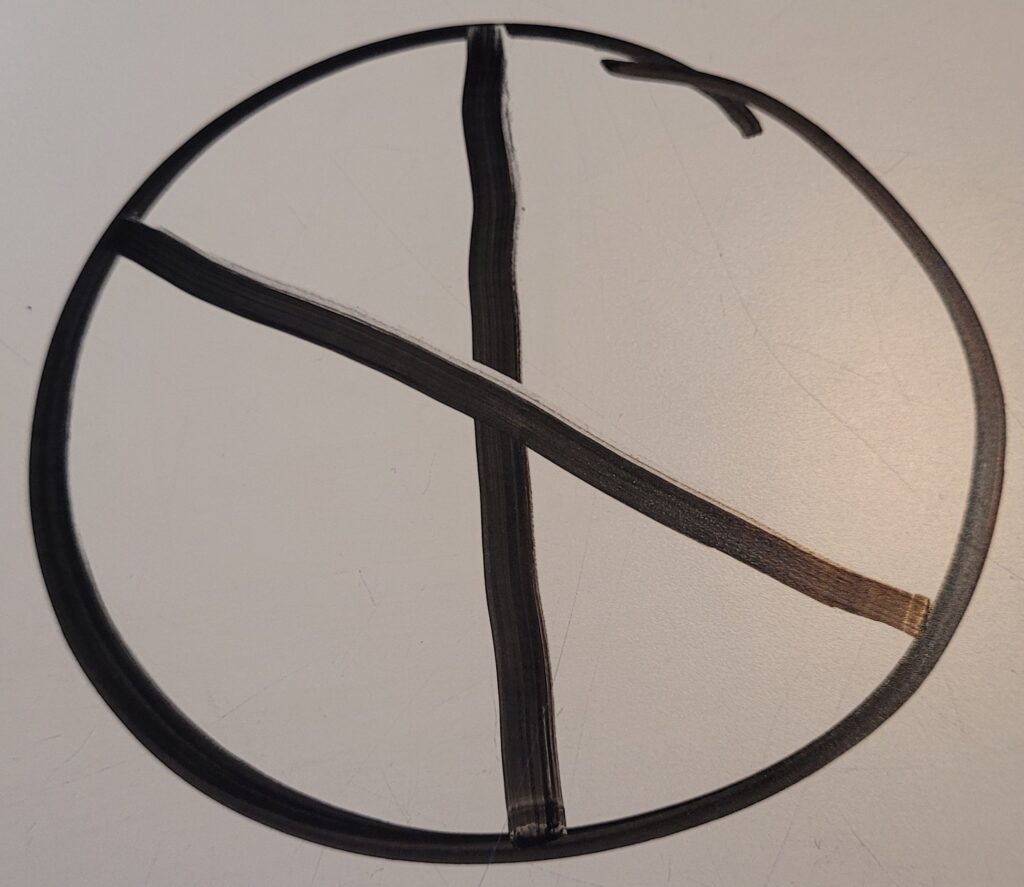

Or you can draw the wide ‘X’ first and then the line down the middle vertically.
Shade in 3 of the sixths to show 3/6.
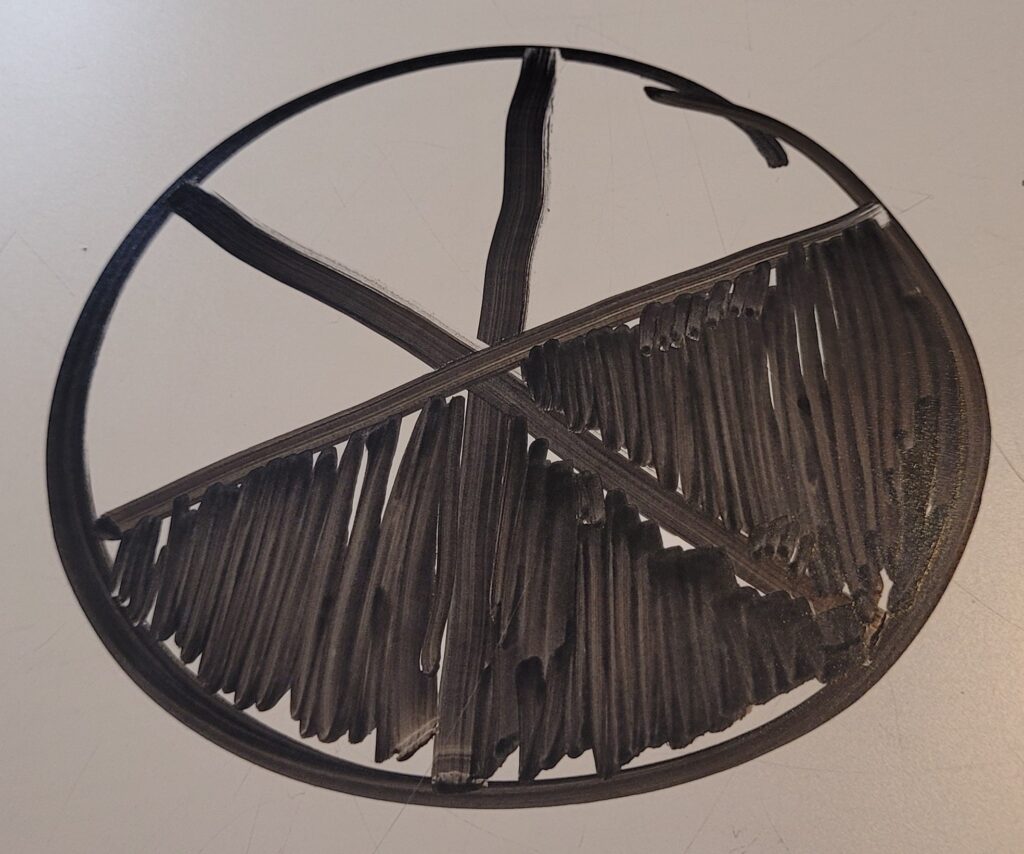
Thirds
Now to make the thirds, you can recreate the sixths in a new circle, using a pencil hopefully, then erase every other line.
This will show thirds.

Last, shade in 2 of those parts to represent 2/3.
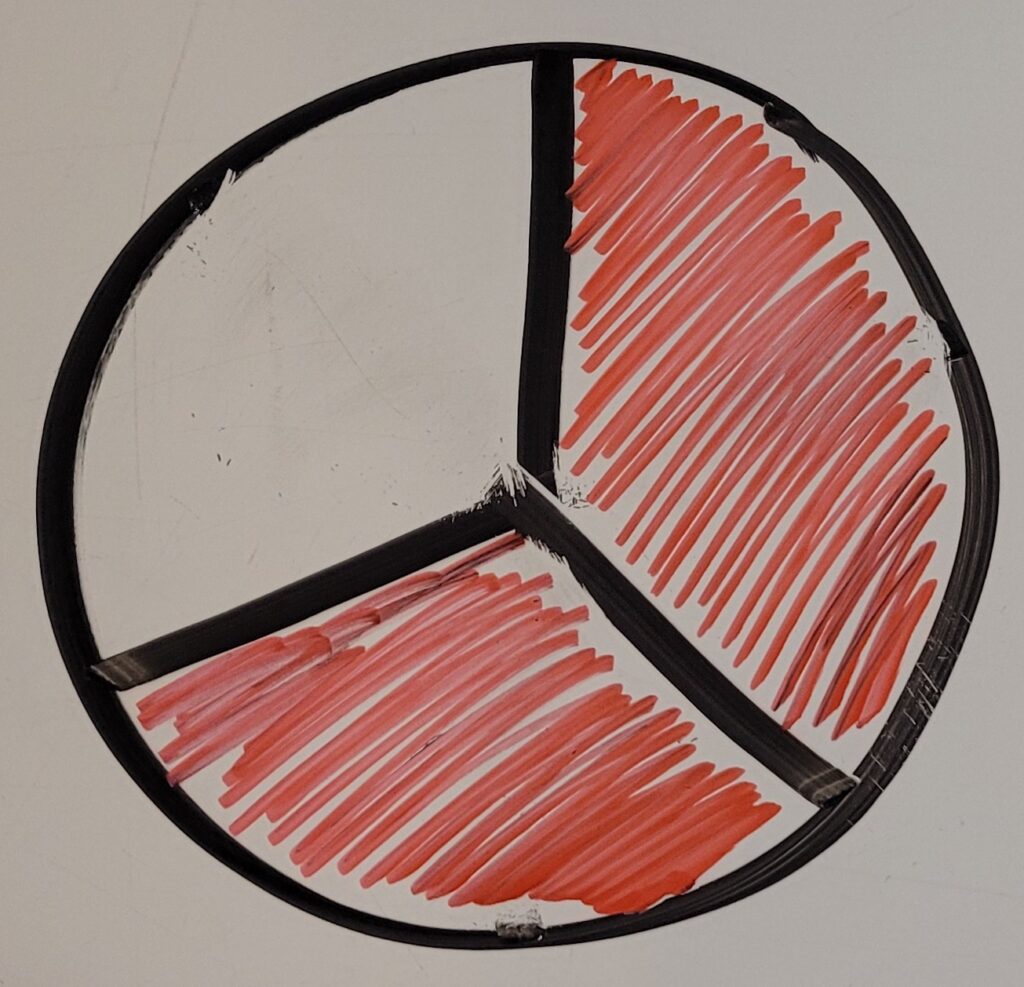
How to Draw an Improper Fraction
Drawing improper fractions, or fractions greater than one, are simple to draw. They are just an extension of drawing fractions, or fractions less than one.
We will just draw more of the same thing.
We will use rectangular area models for these examples.
Five halves
Let’s begin with 5/2 or 5 halves.
Start by drawing one rectangle and partitioning it in half.
How many halves are in this first whole?
There are 2 halves. We need 5 halves.
We will have to draw more rectangles with halves in order to make 5 halves.
Draw another rectangle. Make sure it is the same size whole as the first rectangle.
There are 2 halves in this rectangle. How many total halves are there between the two rectangles?
There are now 4 halves.
Since we need 5 halves, we can draw one more rectangle.
After drawing a third rectangle and partitioning it in half, there are two extra halves.
A total of 6 halves.
But we only want to represent 5 halves.
So from this last rectangle, or whole, we will only use 1 half.
Shade in the 2 halves from the first rectangle, the 2 halves from the second rectangle, and 1 half from the third rectangle.
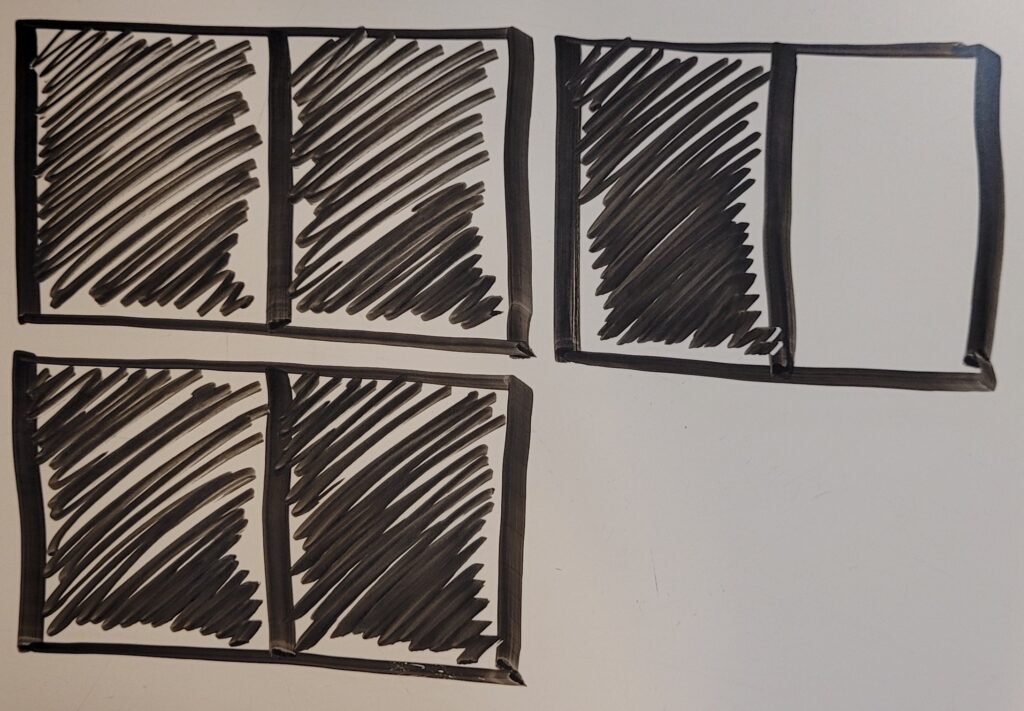
Now the picture model represents 5/2 or 5 halves.
How can we follow the same process to represent 13/6?
Thirteen sixths
Since the fraction has 6 as the denominator, we will partition each rectangle into sixths.
After drawing the first rectangle and partitioning it into sixths, how many sixths are there?
6
Of course. 🙂
We need 13 sixths so let’s keep drawing.
A second rectangle will show 6 more sixths for a total of 12 sixths.
Draw a third rectangle. This will show 6 more sixths which will make 18 sixths total.
We only need 13 sixths so we will just shade in 1 sixth from the third rectangle.
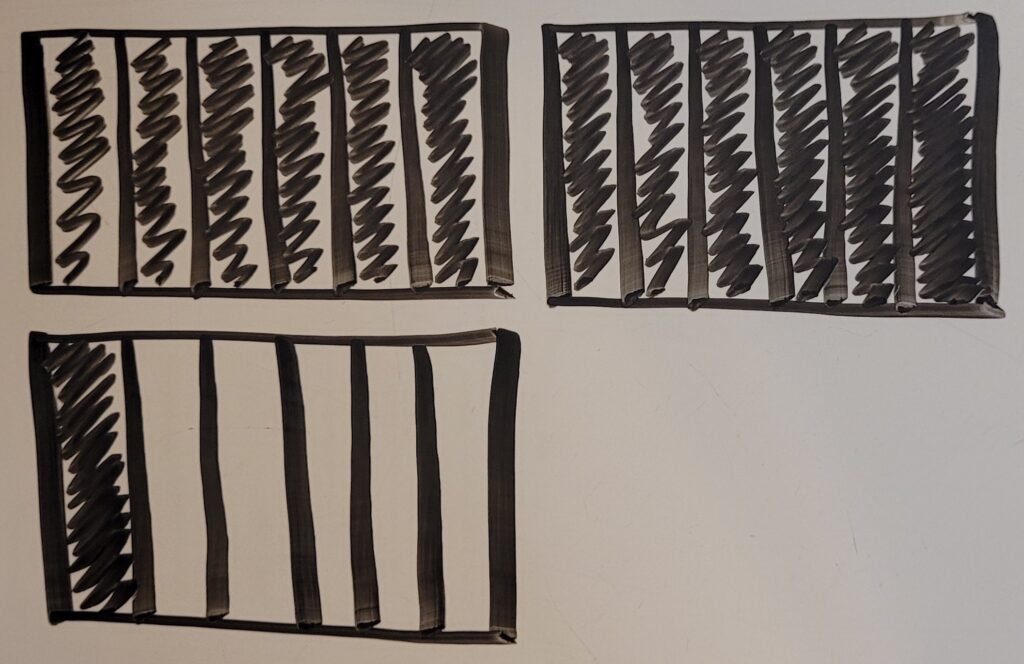
6 sixths shaded in from the first rectangle, 6 sixths shaded in from the second rectangle, and 1 sixth shaded in from the third rectangle all join together to show 13 sixths, or 13/6.
Eighteen fifths
Let’s do one where the numerator is a lot greater than the denominator. 18/5.
Let’s think about this before drawing the picture model since we know the steps now.
The denominator is 5 so we will partition each rectangle into fifths. There will be 5 fifths in each whole, or rectangle.
How many groups of 5 are in 18?
There are 3 groups of 5 in 18.
So we can draw 3 rectangles and partition them into fifths for a total of 15 fifths.
We will need to draw a fourth rectangle to have enough for 18 fifths.
After drawing four rectangles, all the same size, partition them all into fifths.
Shade in all of the fifths in the first 3 rectangles.
Only shade in 3 fifths in the fourth rectangle.
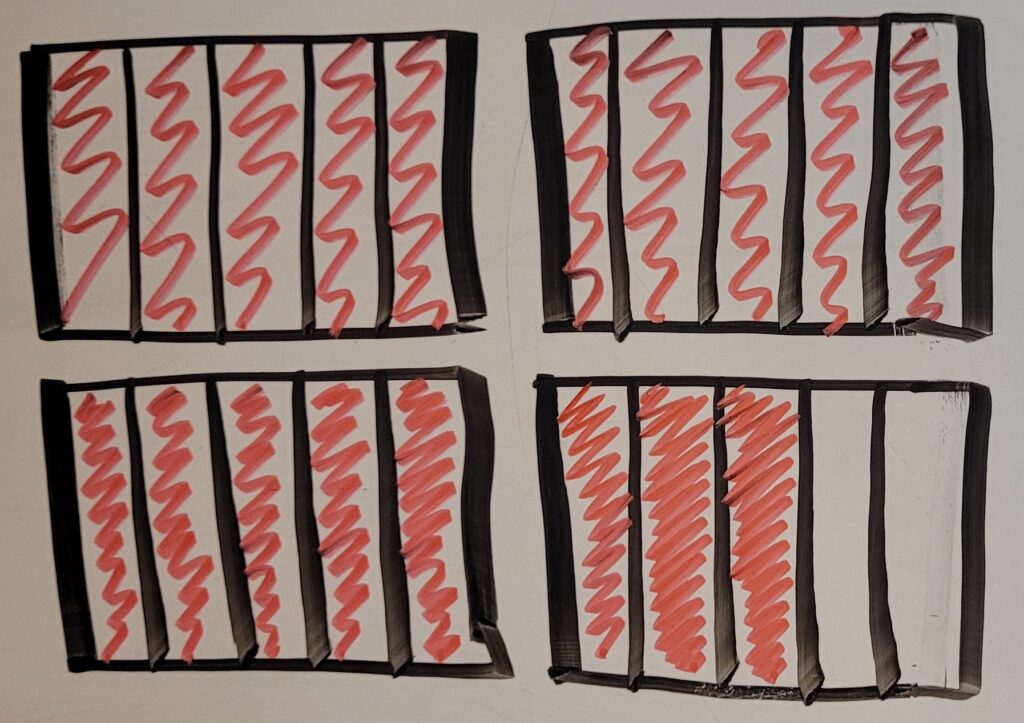
After you count them all up, there are 18 fifths shaded in, or 18/5.
In the next section we will practice more with circular area models to represent mixed numbers.
However, you can use either rectangular or circular area models to represent fraction, improper fraction, or mixed numbers.
How to Draw Mixed Numbers
When drawing mixed numbers, we want our students to understand that they represent the same amount as the improper fractions, or fractions greater than one.
We will use circular area models to represent the mixed numbers.
One and two sixths
First we will draw 1 whole and 2/6 or 1 2/6.
Just like with the fractions less than one and the fractions greater than one, or improper fractions, we look to the denominator to determine the size of the parts in each whole or how we will partition each circle.
The denominator here is 6 so we will partition the whole into sixths.
The first part of the mixed number is 1 whole. We don’t need to partition it because we know that all of it will be represented.
So for the first circle, we won’t partition it, we will just shade in the entire thing.
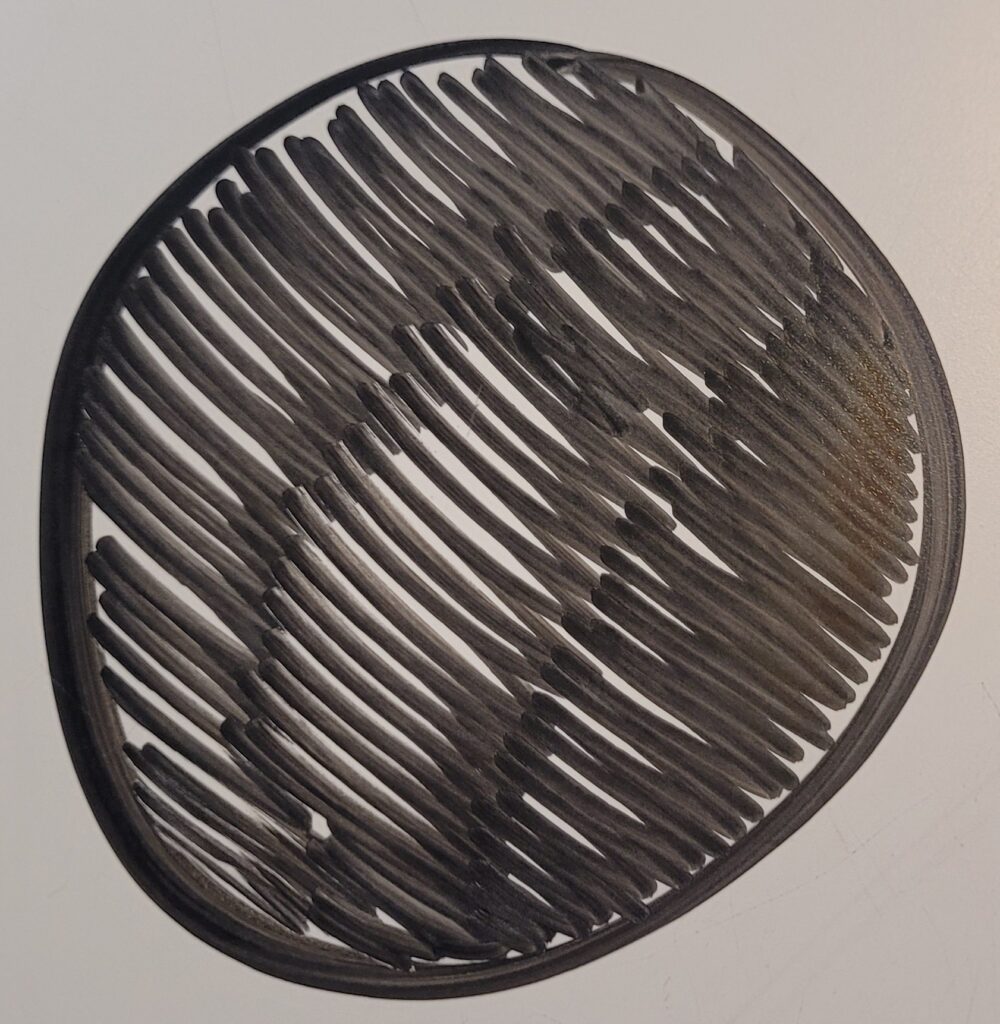
For the second part of the mixed number, it is 2/6.
We will draw a second circle and partition it into sixths. Then shade in 2 of the sixths.
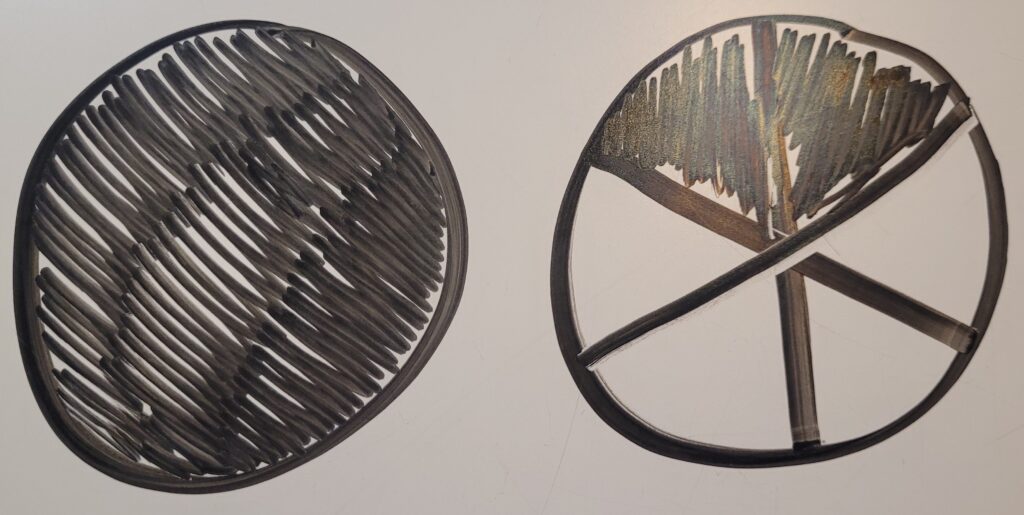
Now our picture model shows 1 whole shaded in and 2 sixths shaded in, or 1 2/6.
Two and three eighths
In our second example we will represent 2 wholes and 3/8.
Start by drawing 2 circles to represent the 2 wholes. Shade them both in.
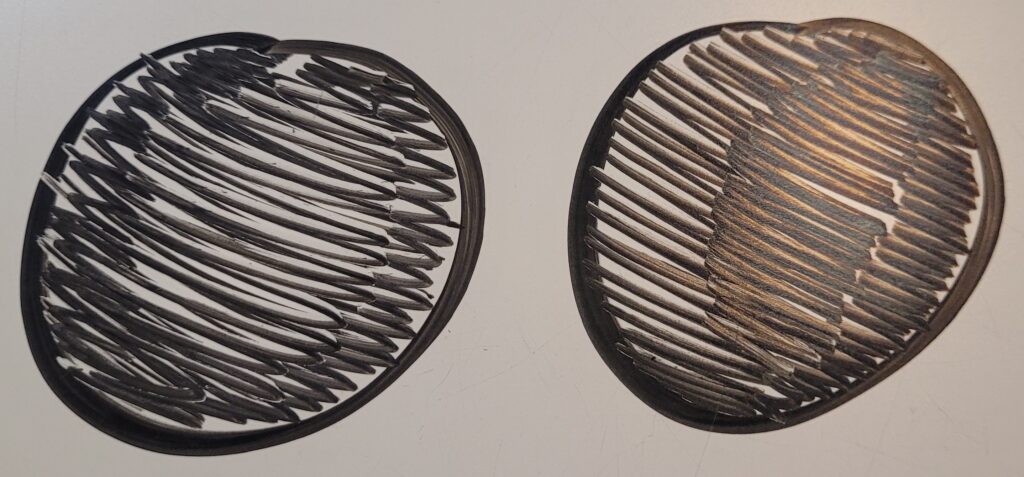
Next, draw a third circle, partition it into eights, since the denominator of the fraction is 8.

Shade in 3 of the eighths.

2 wholes shaded in and 3 eighths shaded in represent the mixed number 2 3/8.
Five and one fourth
Lastly, we will show 5 wholes and 1/4.
Draw 5 circles, all the same size. Shade them all in.
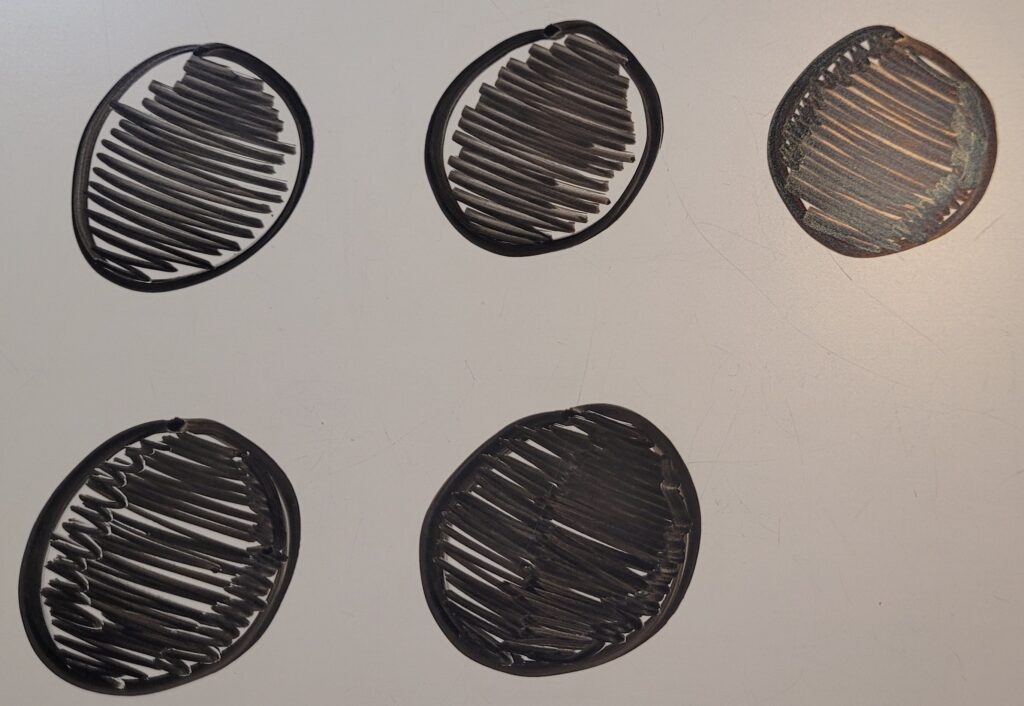
Then draw a sixth circle that is the same size, and partition it into fourths.
Shade in 1 of the fourths.
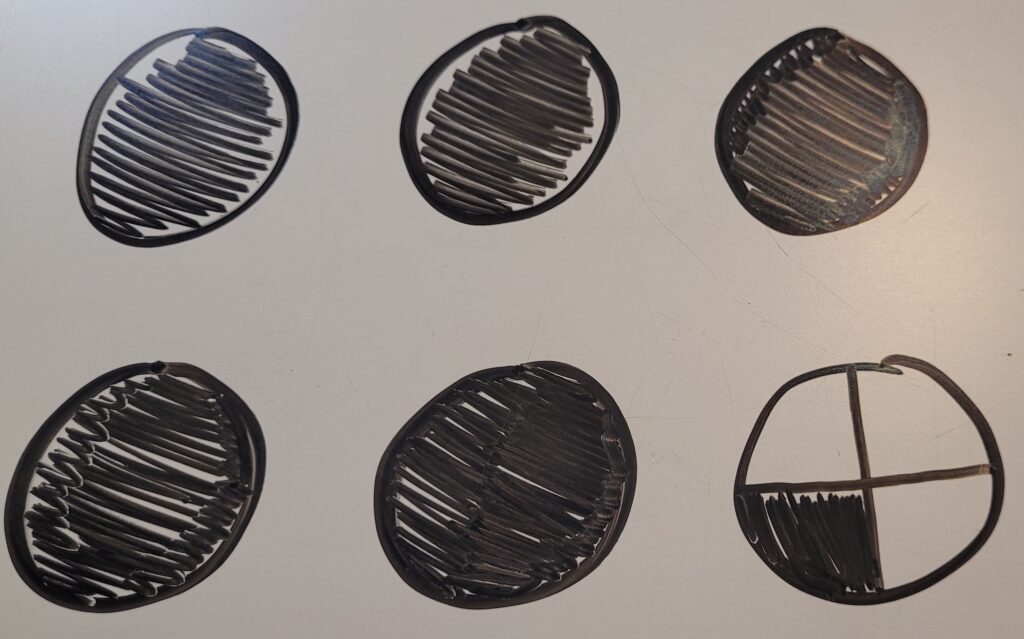
5 wholes shaded in and 1 fourth shaded in represent the mix number 5 1/4.

Draw a Fraction Using Grid Paper
If you or your students continue to struggle with drawing these picture models of fractions, I highly suggest using grid paper instead of blank paper.
Use the grid paper specifically with the rectangular area models. It will also help with drawing number lines that will be shown in later examples.
If you don’t have grid paper, or can’t get any, lined paper will help as well.
Below are examples of drawing a fraction less than one, fraction greater than one, and a mixed number as a rectangular area model using different sized grid paper.
7/8

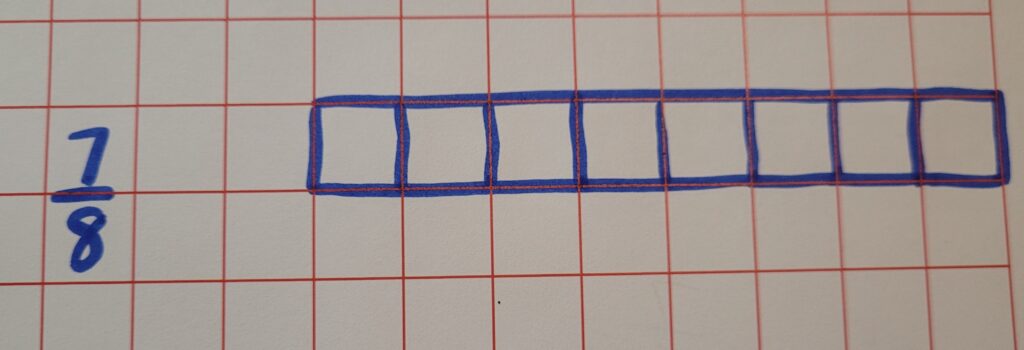

6/4
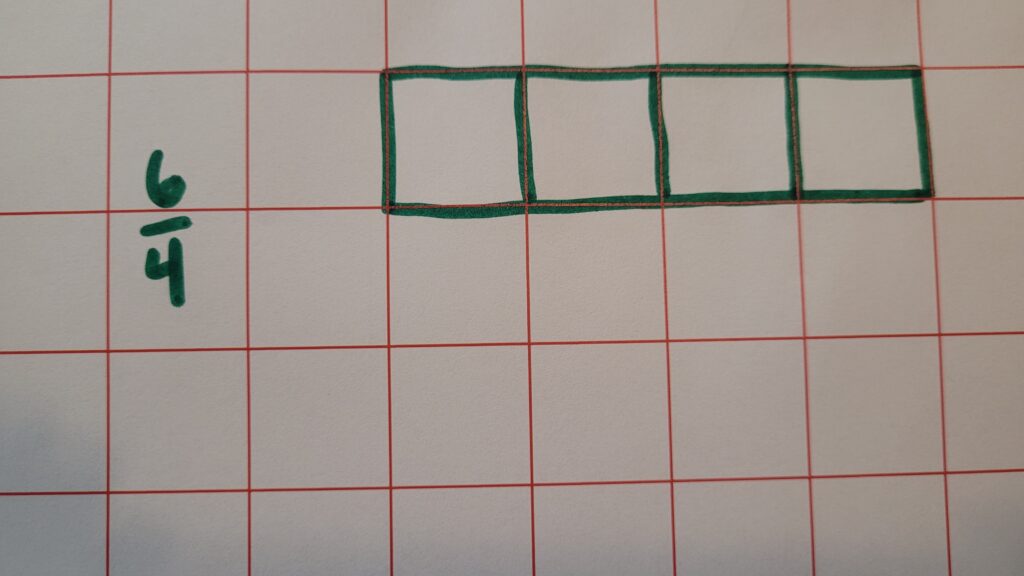
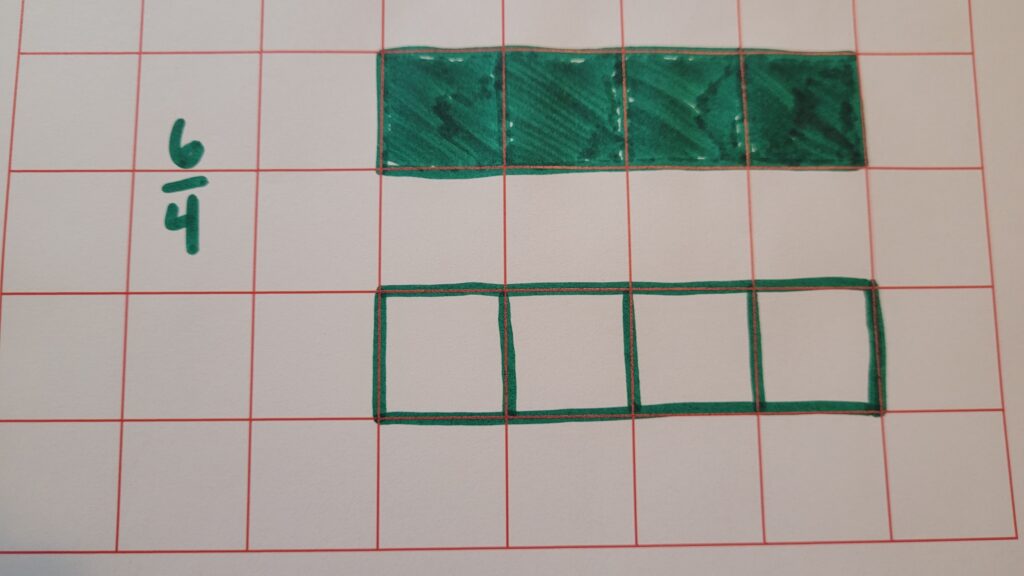
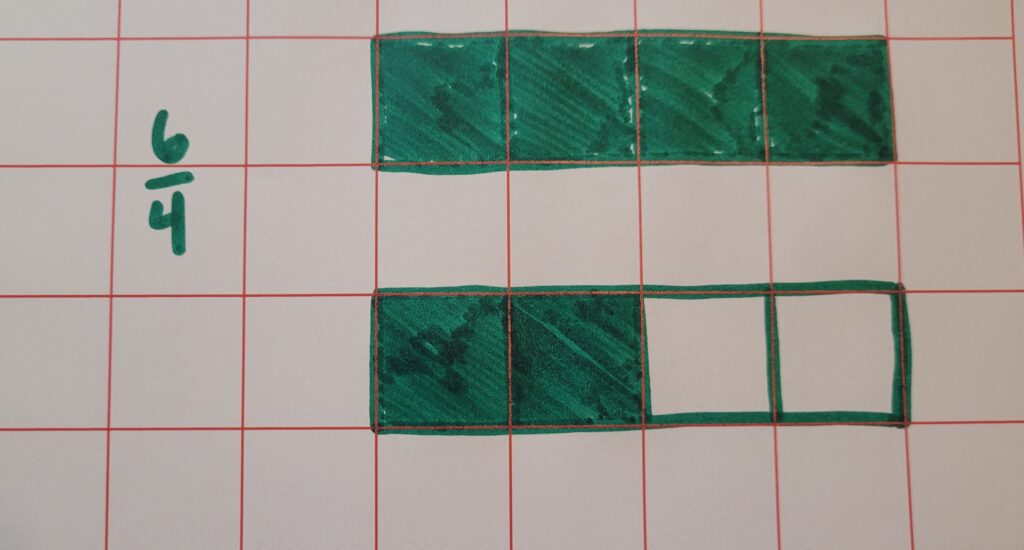
4 2/3
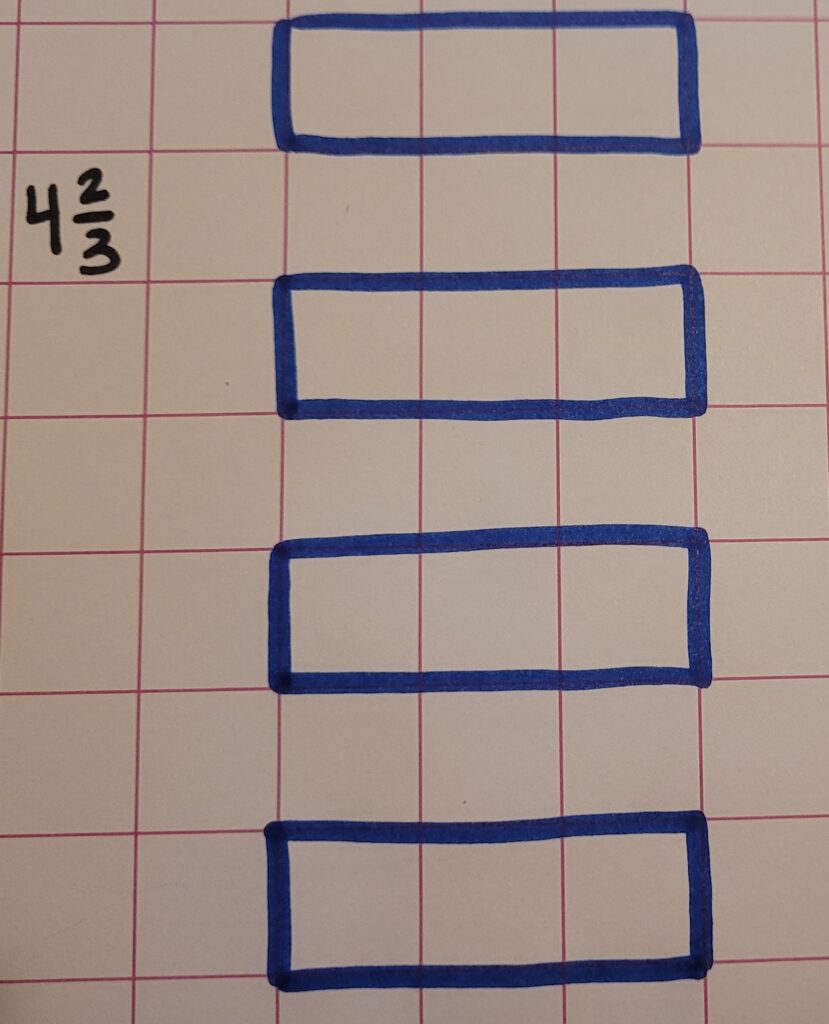
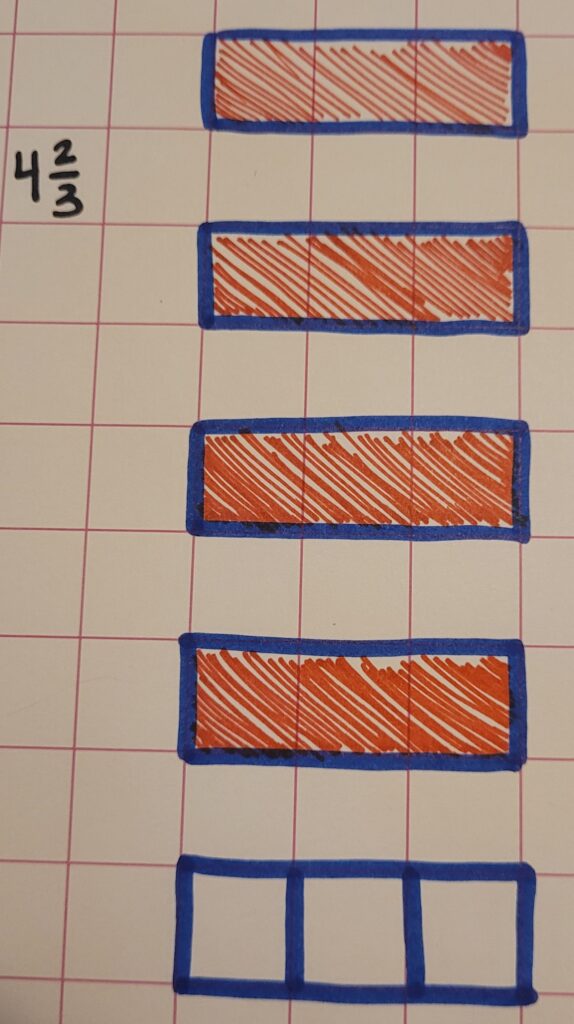
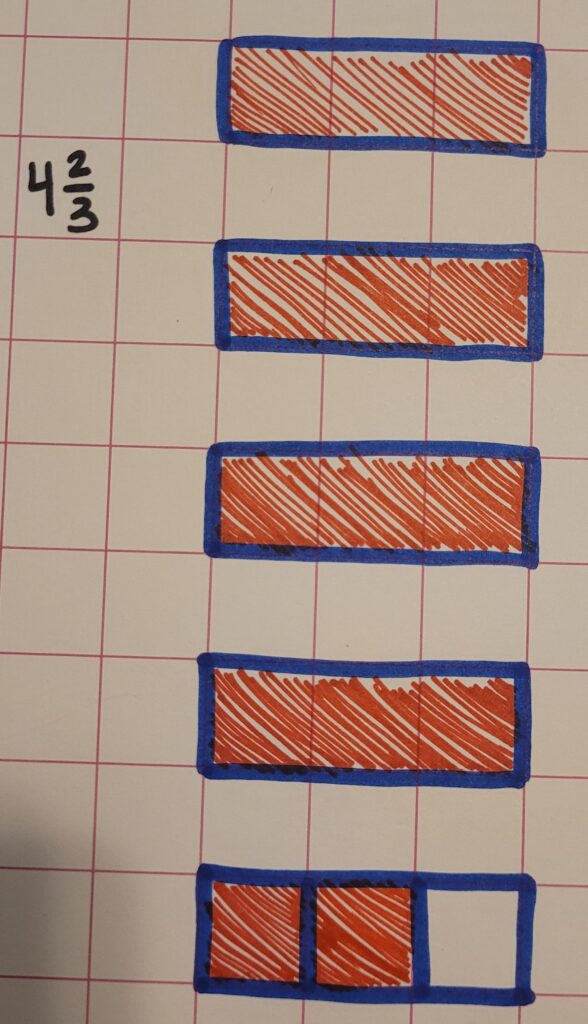
How to Draw a Fraction Using Number Lines
Now I will show you how to draw a fraction using number lines, which will be linear models and not area models.
Two fourths
2/4 will be the first fraction we represent on the number line.
Start by drawing a straight horizontal line using blank paper, lined paper, or grid paper.
Draw a tick mark on each end point and label the endpoint on the left ‘0’ and the endpoint on the right ‘1’.
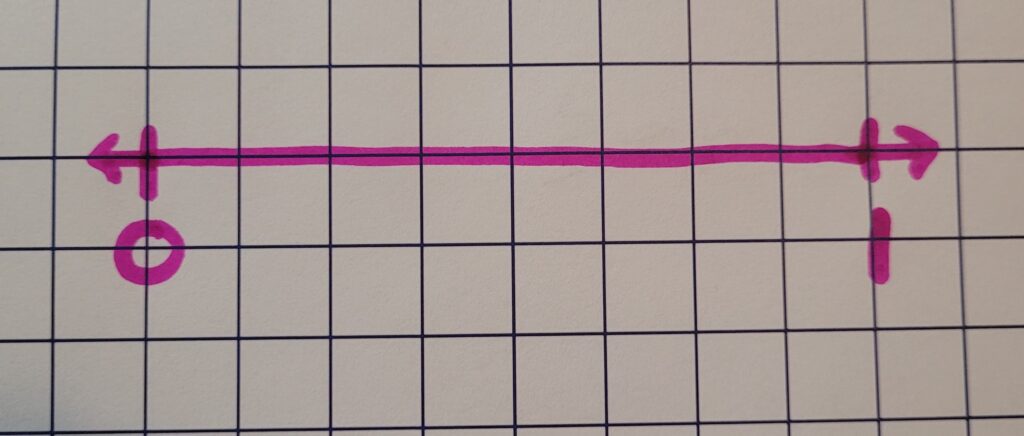
4 is our denominator so we will partition the number line into fourths.
First, partition the number line in half, at the midpoint of the line.
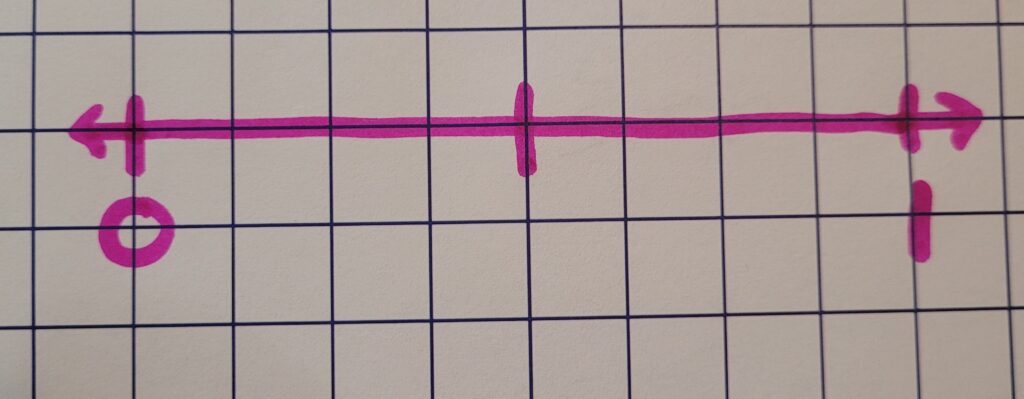
This creates 2 halves.
Now just like with the area models, we can partition each of the halves in half here too.
You should have 4 fourths now.
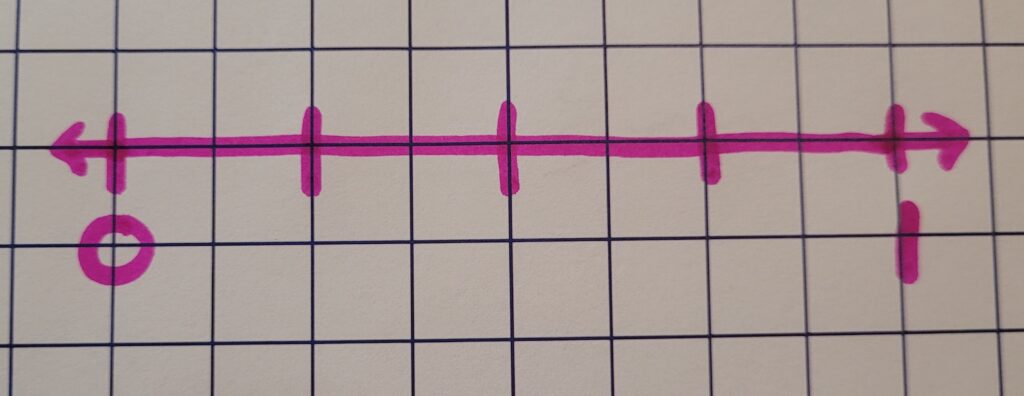
When using a number line, we need to ensure that our students understand that the space between each tick mark is the fraction part and not just the lines, or tick marks.
The tick marks are at the end of each of our fraction parts.
So to represent 1 fourth, move from the zero mark to the next tick mark.
Label this 1 fourth, or 1/4.
Sometimes if my students get confused by this, I tell them to think of a jump from one tick mark to another.
This should help them relate this number line with fractions to number lines with whole numbers since they’ve mostly likely practiced jumping from one number to another on a number line in previous grades.
If we move, or jump, to the next tick mark, it will represent the end of 2 fourths, 2/4.
You can stop here or have students also label the remaining tick marks.
Jumping to the next one will be 3 fourths, and the last one will be 4 fourths or 1 whole.
Make sure they can show you again where 2 fourths is on their number line.
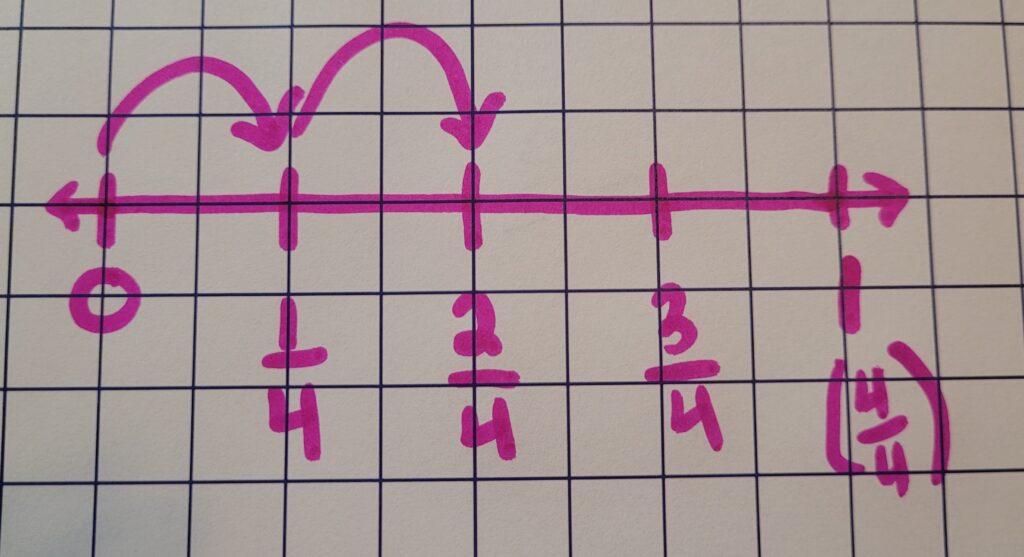
Five twelfths
Next let’s show 5/12 on the number line.
Draw another horizontal line.
Partition it into twelfths.
Do this by partitioning the line in two halves.
Partition each half into thirds.
Just like with the area models, the thirds will be less than the size of 1 half but greater than the size of 1 fourth.
They should work with halves, fourths, and eighths on the number line before moving to thirds, sixths, and twelfths.
On both sides of the midpoint line, there should be 3 equal parts for a total of 6 equal parts, or sixths.

Now, partition each of the sixths in half in order to make twelfths.

Can you find where 5/12 will be on the number line?
Beginning at the zero tick mark, jump 5 tick marks forward.
This is where 5/12 is.
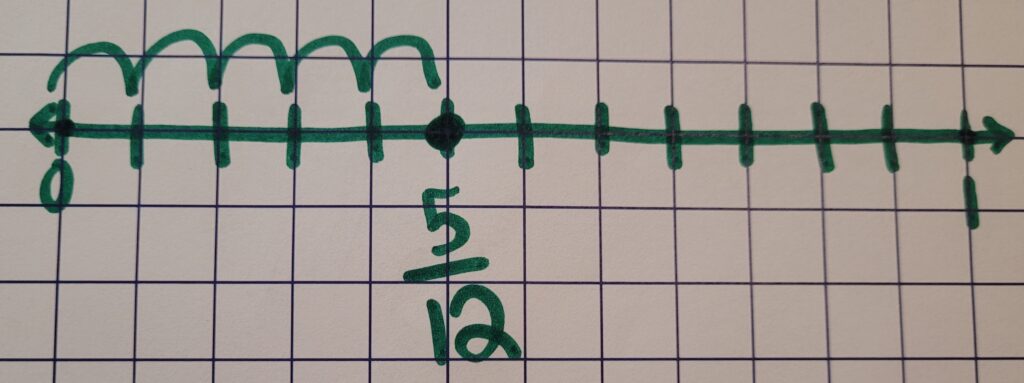
You can have students label all of the fraction parts or just show where 5 twelfths is.
How to Draw an Improper Fraction on a Number Line
Similar to working with the area models, in order to draw improper fractions on a number line, we will extend the number line beyond 1 whole.
Seven thirds
In the first example, we will use 7/3.
Based on the denominator, there are 3 equal parts, or thirds that make up 1 whole in this example.
So when we draw our number line, we need to make it long enough to fit 7 thirds.
Let’s think about this before we begin drawing.
If 3 thirds equals 1 whole, how many thirds do we need to make 2 wholes?
We need 6 thirds. That is 1 less than our improper fraction 7/3.
So we will need to draw a line long enough to show 3 wholes. So the number line will extend from 0 to 4.
Since there are 4 wholes for this example, we can draw a horizontal line and partition it into 4 equal parts.
Instead of those parts representing fourths, they will each represent 1 whole.
The first endpoint will still be zero. The second endpoint will be labeled with a 4.
The middle line will be labeled with a 2. The line between zero and 2 is 1, and the line between 2 and 4 is 3.
Now that we have our wholes, we need to then partition each whole into thirds.
Since we practiced drawing thirds on a number line when making the twelfths in our last example, students should feel more comfortable drawing the thirds here.
After partitioning each whole into thirds, there should be a total of 12 thirds.

Here is the fun part again. Starting at the zero tick mark, move, or have students jump with their pencil on the paper, from mark to mark until they count to 7.

To help reinforce their understanding of fractions on a number line, have them count using the fraction term and not just the whole number.
1/3, 2/3, 3/3, 4/3, 5/3…..and so on.
Ten eighths
Our next example is 10/8.
We will use the same process.
The denominator is 8 so we will need to partition each whole into eighths.
But how many wholes do we need?
1 whole equals 8 eighths.
2 wholes equal 16 eighths. This will be enough to represent 10 eighths.
So we will need to draw a horizontal line that extends from 0 to 2.
After drawing the number line and representing it as 2 wholes, partition both wholes into 8 equal parts.
Have your students label the parts all the way to 2 wholes using improper fractions, or leave it blank and just label where 10/8 would be.

Again have them count saying the fraction terms:
1/8, 2/8, 3/8,….and so on.
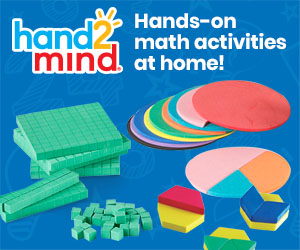
How to Draw a Mixed Number on a Number Line
In our final section, we will draw mixed numbers on a number line.
This looks very similar to drawing fractions greater than one, or improper fractions, on a number line.
The main difference is in how you label each fraction part.
One and five sixths
We will use the mixed number 1 5/6.
Because this mixed number is at least 1 but not greater than 2, we can draw a number line that extends from 0 to 2 wholes.

Partition both wholes into six equal parts, or sixths.

Then instead of labeling them using fractions and improper fractions, once you get beyond 1 whole, the next tick mark will be labeled 1 1/6, then 1 2/6.

Have students count using mixed numbers as they move along the number line.
1/6, 2/6, 3/6, 4/6, 5/6, 6/6 or 1 whole.
1 and 1/6, 1 and 2/6, 1 and 3/6, 1 and 4/6, 1 and 5/6.
Three and one half
Our final example is 3 1/2.
Based on the whole number 3, we know that the number line goes to at least 3.
But because of the 1/2 in 3 and 1/2, we will need to extend the line to 4 wholes.
Draw a horizontal line and label the first end point with a 0 then the second end point with a 4.
Partition the line into 4 equal parts and label each part as a whole. 1, 2, 3 and 4 wholes.

Then partition each of the wholes in half so there will be a total of 6 halves.

Then label the tick marks.
Moving from zero to the next tick mark will show ½. After that it is 2/2 or 1 whole.
Then there is 1 and 1/2 , and 2 wholes which also could be written as 1 and 2/2.
Next is 2 and 1/2, then 3.
Then finally 3 and ½.


OK so now you know how to draw a fraction.
After taking your students that need support with drawing fraction picture models through these steps and many examples, they should have more accurate representations of the fractions in their problems.
This is definitely not a one and done mini lesson. It is something that you can refer back to in order to help give students the extra support they need to show their understanding of fractions.
Related Blog Posts
Equivalent Fractions How to Guide – 3 Useful Tips to Know
Easily Teach How to Adding Mixed Numbers in 3 Different Ways

